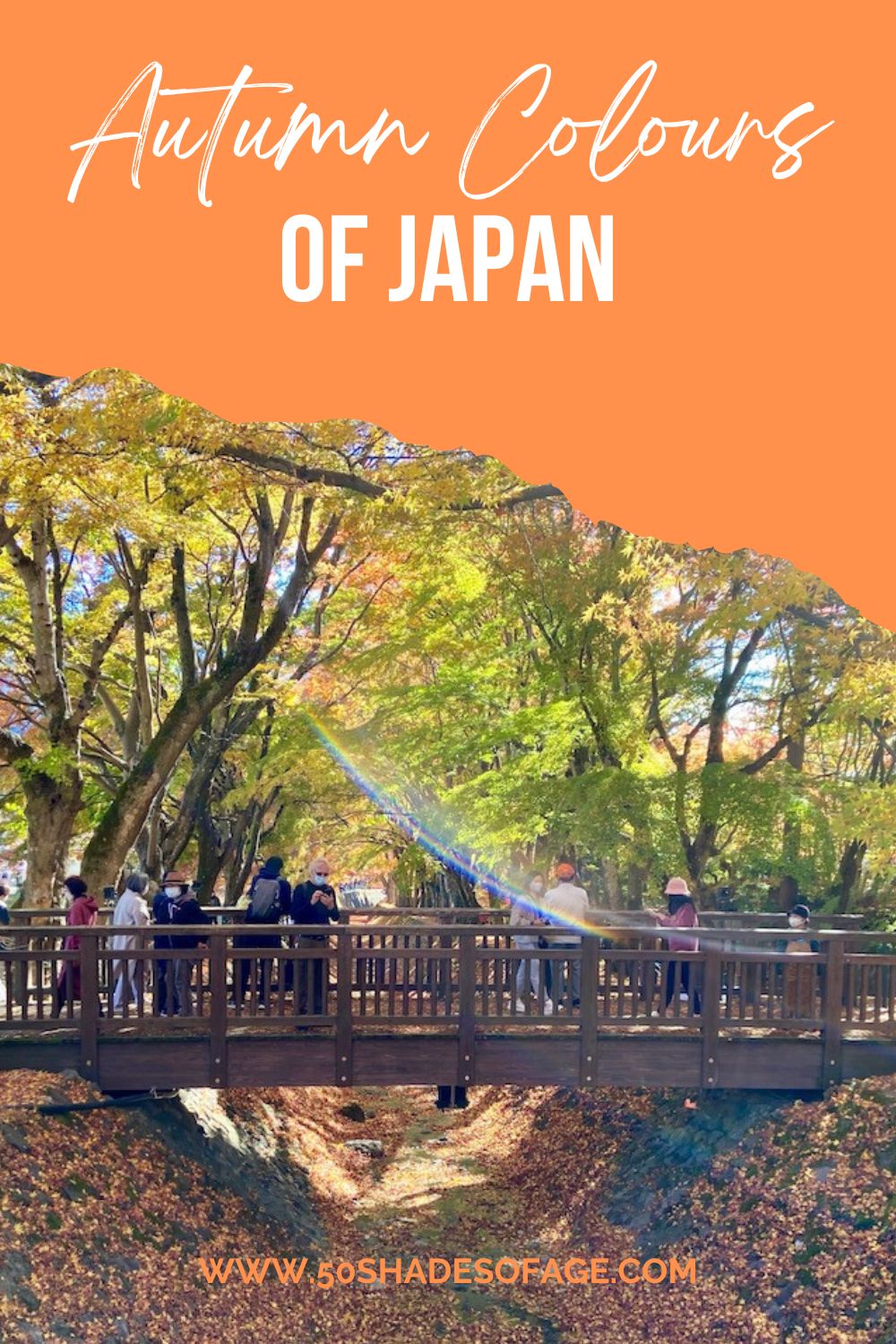
A big drawcard for many visitors to Japan in autumn is to partake in Momiji-gari, (in English meaning “hunting red leaves”). Deriving from the Japanese words of momiji (red leaves, or maple tree), and kari (hunting). The autumn colours of Japan generally start to appear from October through to the end of November, and transforms the country’s many forests into breathtaking vistas of vibrant red, orange, and yellow leaves.
We were fortunate to travel to Japan on a 15 day fully guided tour in early to mid November in 2022. Because we had heard of how beautiful Japan was at this time of year, we were in for a treat – not to mention the pleasant temperatures we experienced. Although the cooler climate in the northern regions of Japan produce some wonderful explosions of autumn colours, our foray to the southern islands of Shikoku and Kyushu, certainly didn’t disappoint.

Our tour commenced in the second largest Japanese city of Osaka. After missing our connecting flight from Tokyo, we were put up in a hotel for the night in Narita and caught an early morning flight to Osaka. The hour-long train trip from Kansai Airport to the city centre of Osaka, gave us a good overview of the sprawling metropolis and the large port that adjoins it.
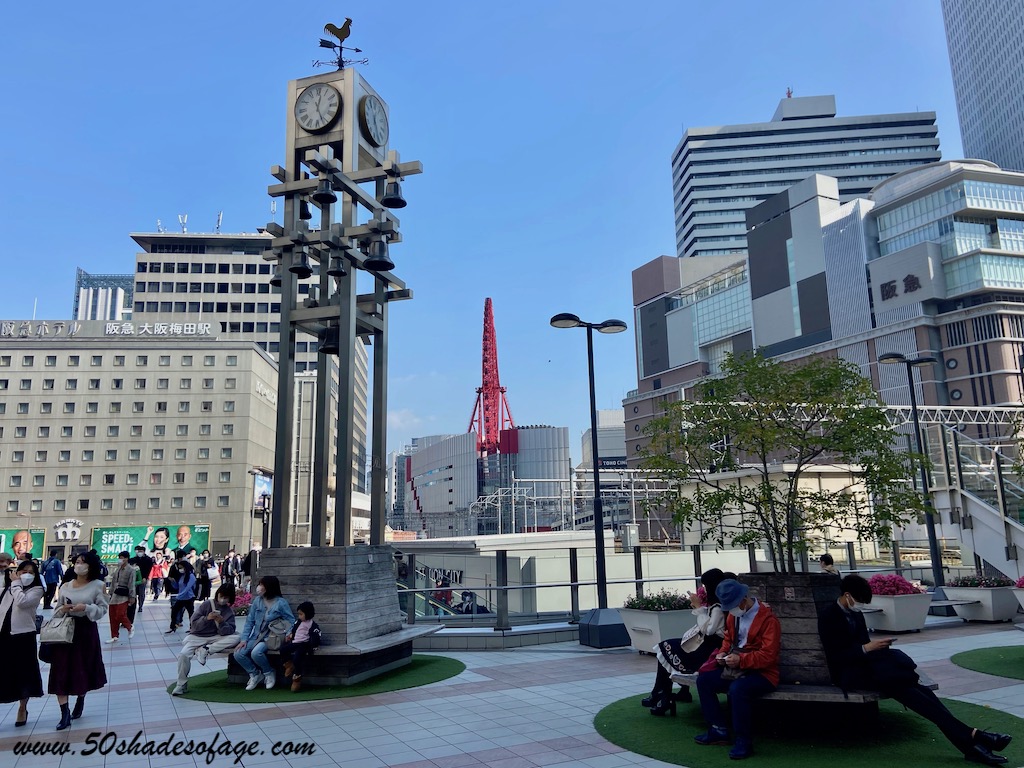
After a day of walking around the city centre and a very comfortable night in our hotel in Osaka, we set off on our tour the following day. Our first stop and first glimpse of the vivid autumn colours, was in the gardens that surrounded Osaka Castle. The entire Osaka Castle Park covers about two square kilometres offering plenty of green space and over 600 cherry trees. I imagine this would be a wonderful sight in springtime.
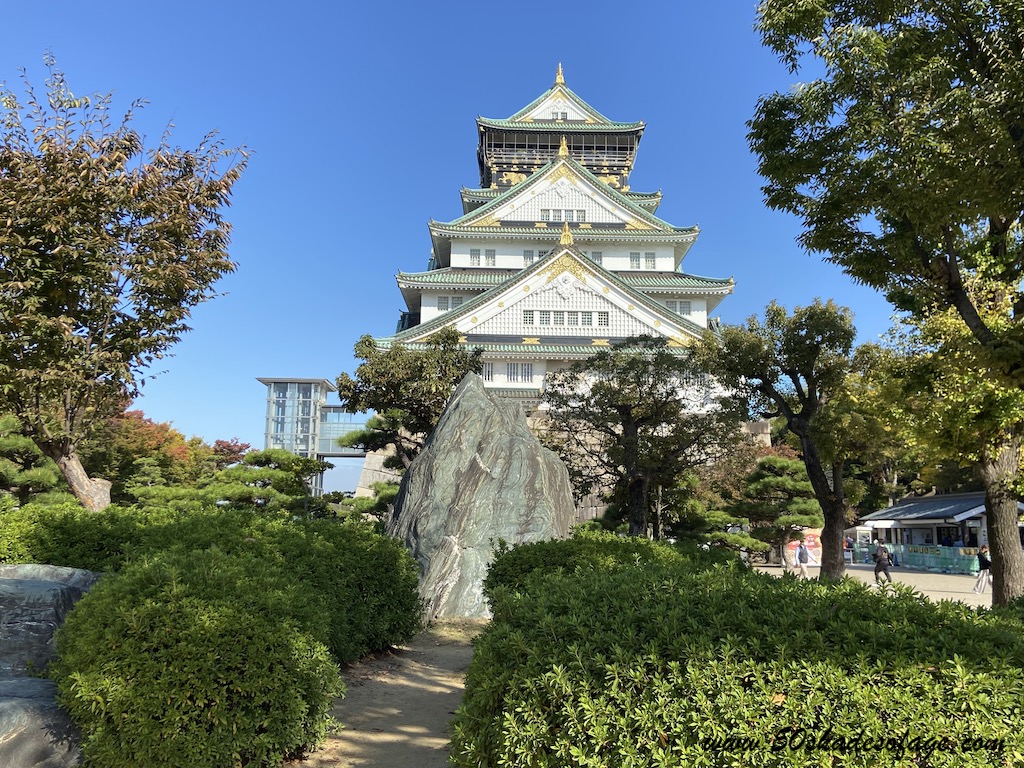
The reconstructed castle tower is surrounded by secondary citadels, gates, turrets, impressive stone walls and moats. You may go to the top of the tower via a lift for magical panoramic views over the gardens and city. The gardens and the moats surrounding the castle make it an Instagram-worthy location for avid photographers.
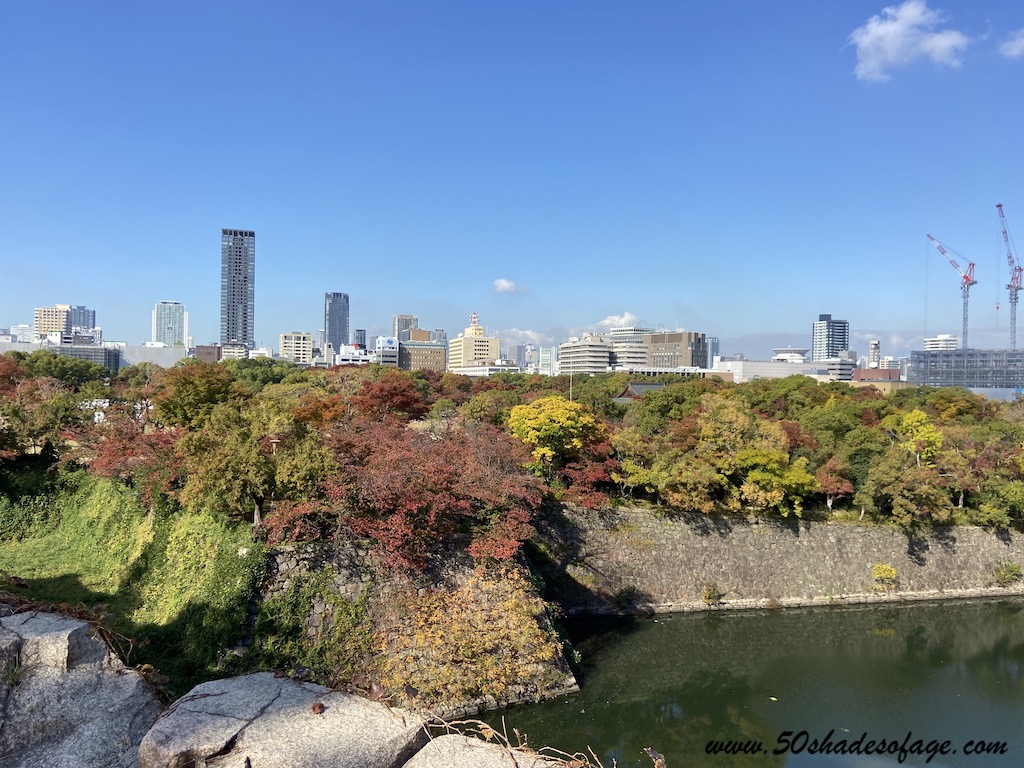
Our second stop of the day in Osaka was in the shopping and eating district of Shinsaibashi and the famous Dōtonbori Street and eponymous canal.
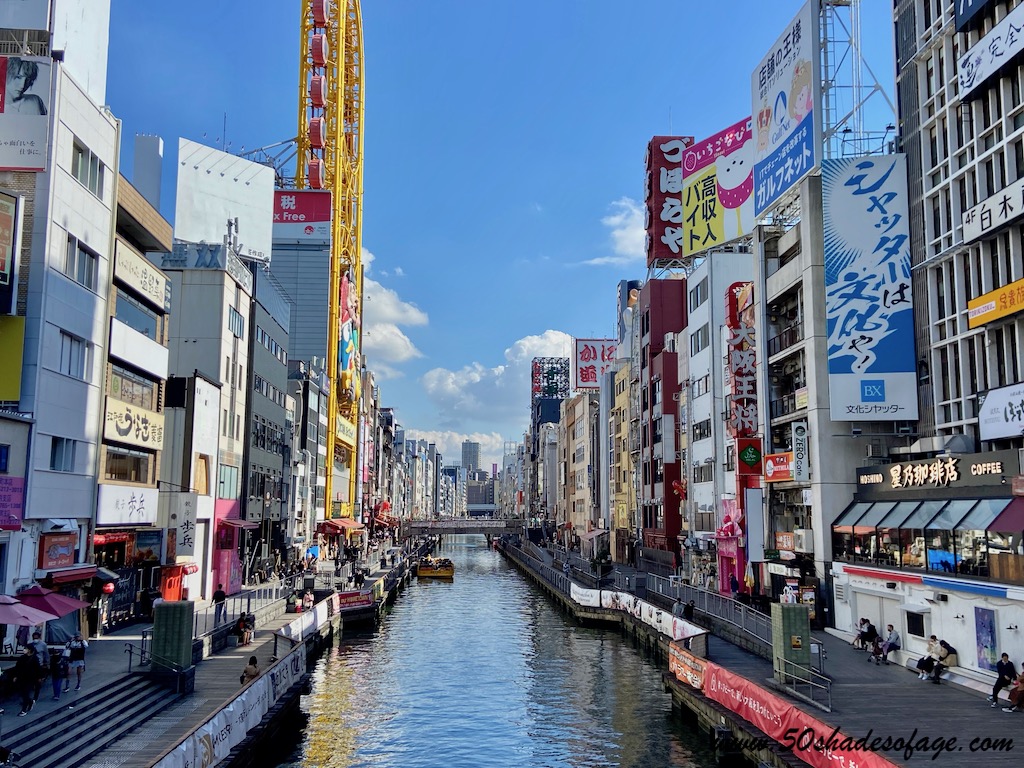
This colourful and vibrant district was pulsing with large crowds of locals feasting on their favourite Japanese street foods, like Takoyaki (octopus balls), Kani Douraku giant crab and Ohsho Gyoza.
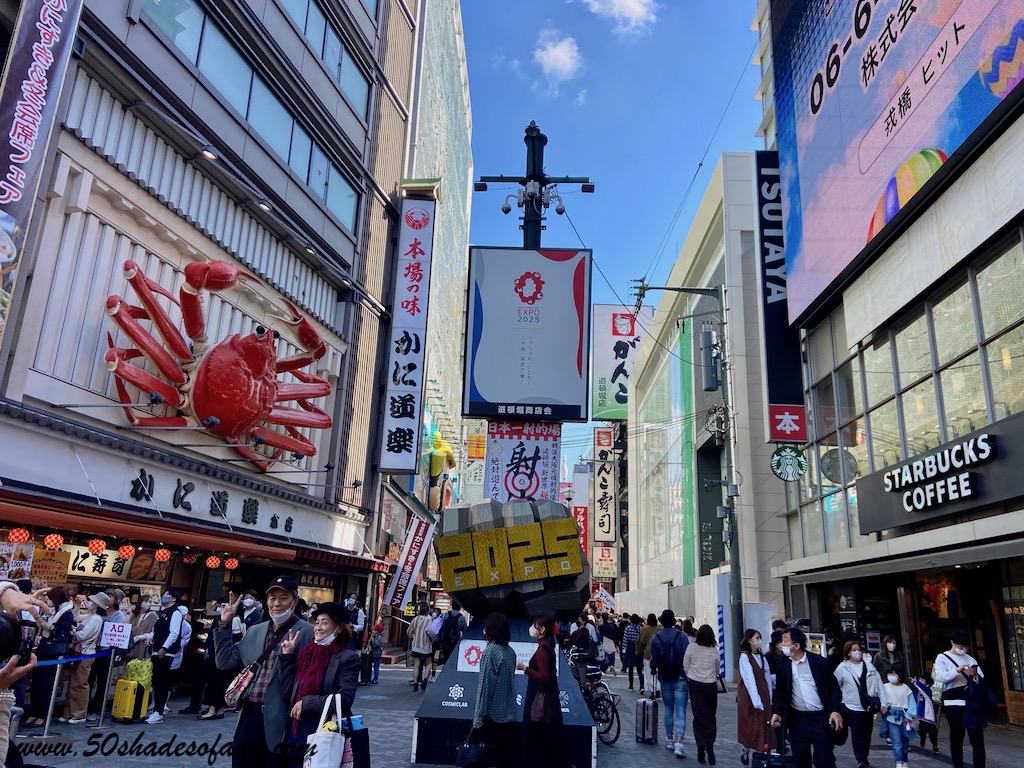
We headed to the former capital and “Geisha” city of Kyoto. Here we visited the Fushimi Inari Shrine that is iconic because of its magical path of over 5,000 orange tori gates that snakes their way up the hills behind the shrine. Kyoto was vastly different to Osaka with its essence of traditional Japanese culture and timeless charm portrayed in its old wooden houses, teahouses and geisha district of Gion.
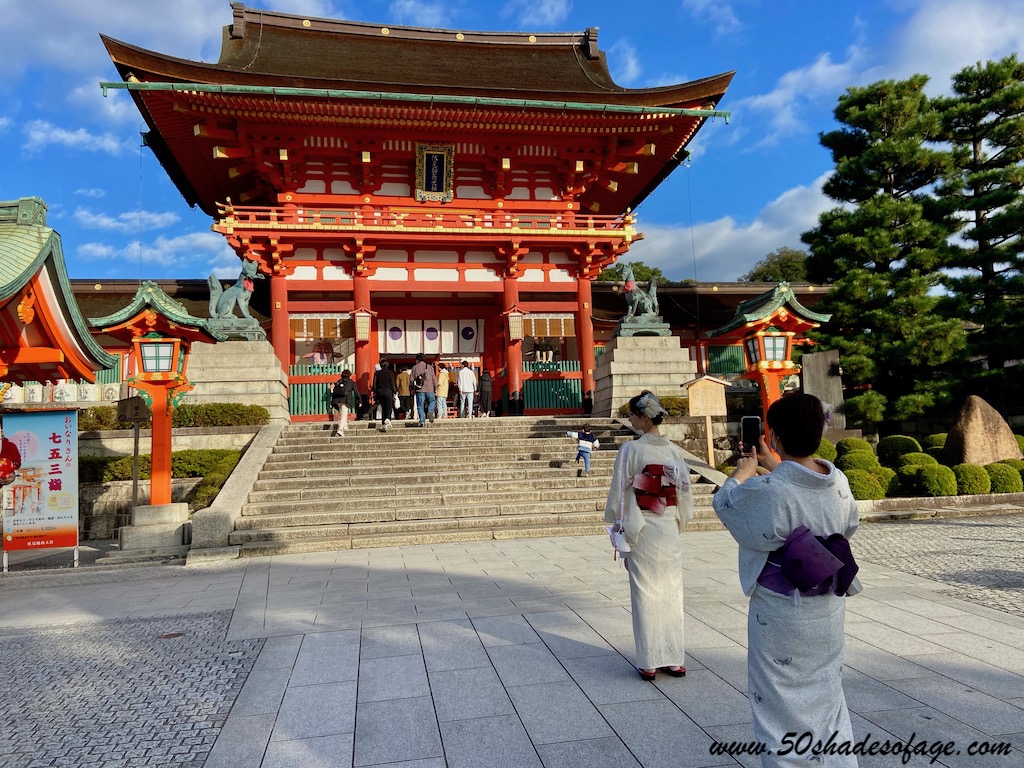
The following day we continued our exploration of Kyoto with a visit to Tofukuji Temple that comprises of the grand sanmon entrance gate, 24 sub-temples and four distinctly different Hasso gardens (including the rock garden). We discovered some beautiful autumn colours in the bridge garden at this temple.
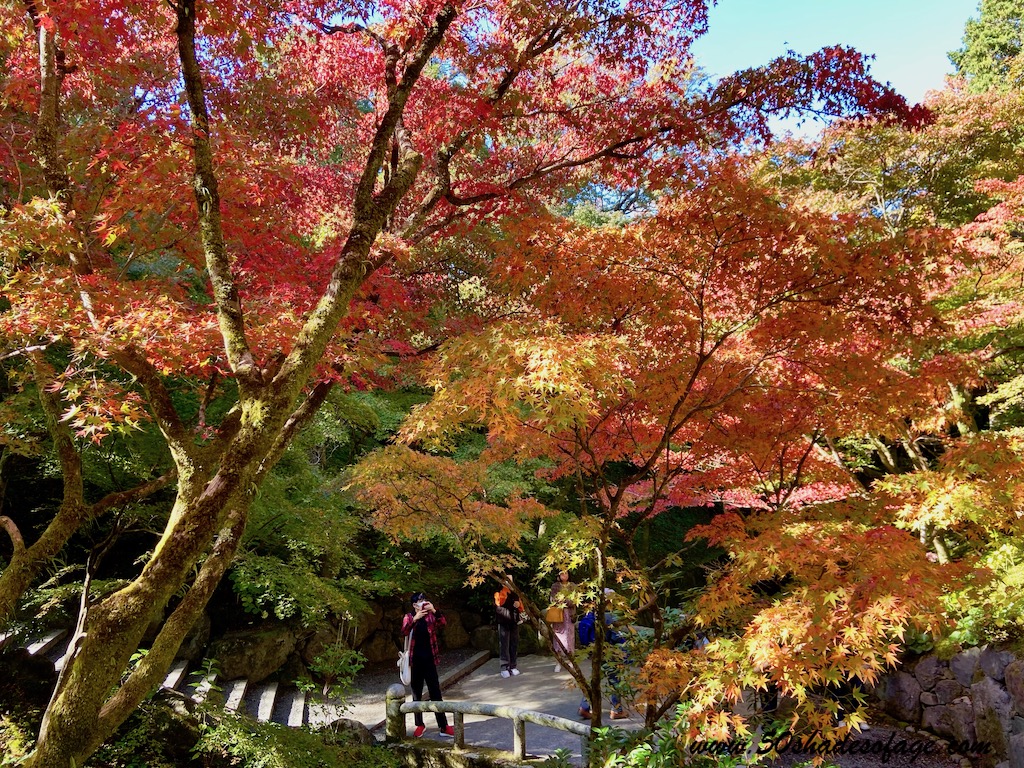
The UNESCO World Heritage Site of Kinkakuji Zen temple called Golden Pavilion, was our second stop for the day. Two of the storeys of this temple are covered in thin layers of pure gold, hence the name “Golden Pavilion”. It sits upon a picturesque lake that reflects the temple into the tranquil waters and is surrounded by pretty Zen gardens.
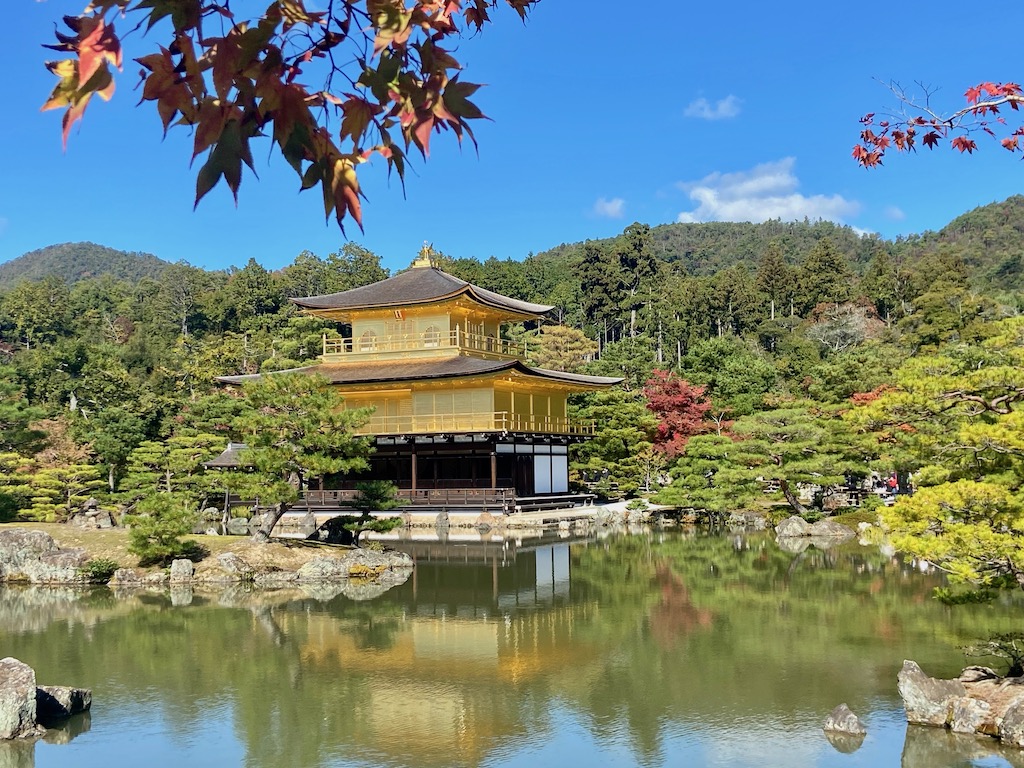
We finished the day off exploring the very popular Arashiyama area alongside the Hozu River on the outskirts of Kyoto. The famous Togetsukyo Bridge is Arashiyama’s central landmark with a lovely promenade flanking the river with small row boats that are available for hire.
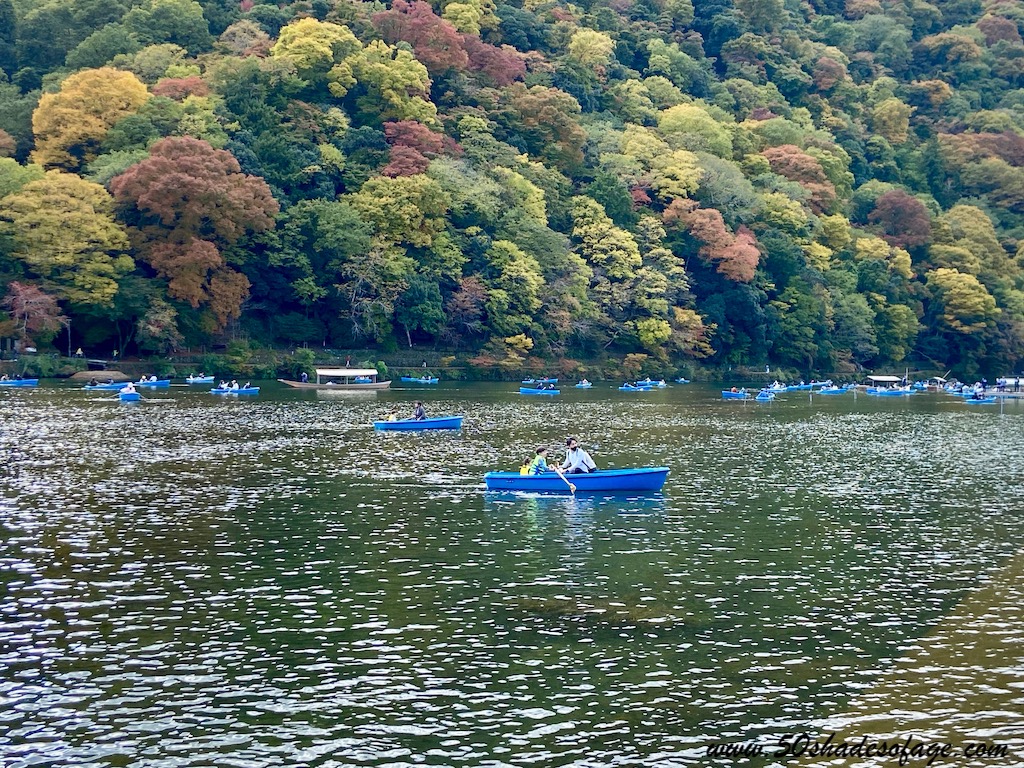
There are many small souvenir shops, restaurants and other attractions found nearby, including Tenryuji Temple and the famous bamboo groves that follow a path up the hillside.
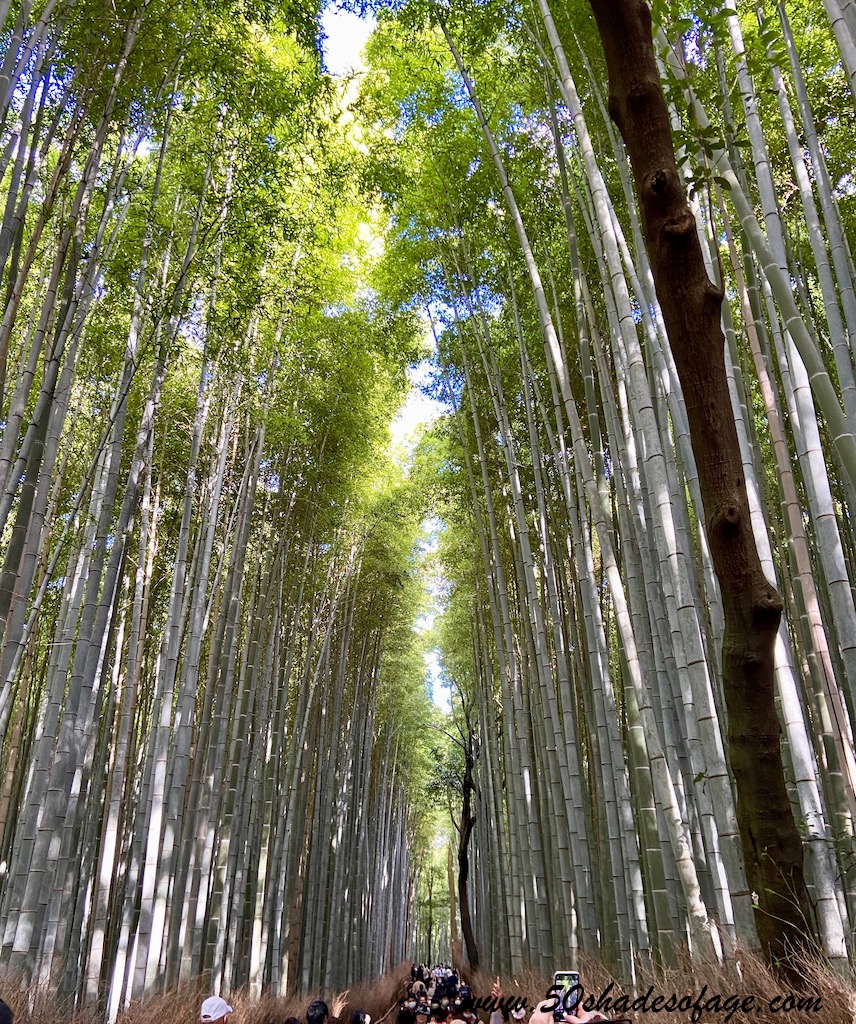
Our tour bus took us southwards to the smallest of Japan’s four main islands – Shikoku. We crossed a large bridge over the Naruto Strait stopping to admire the views and then took a boat cruise out to the mysterious Naruto Whirlpools. This natural phenomenon is created by the fast tidal currents on this narrow strait.
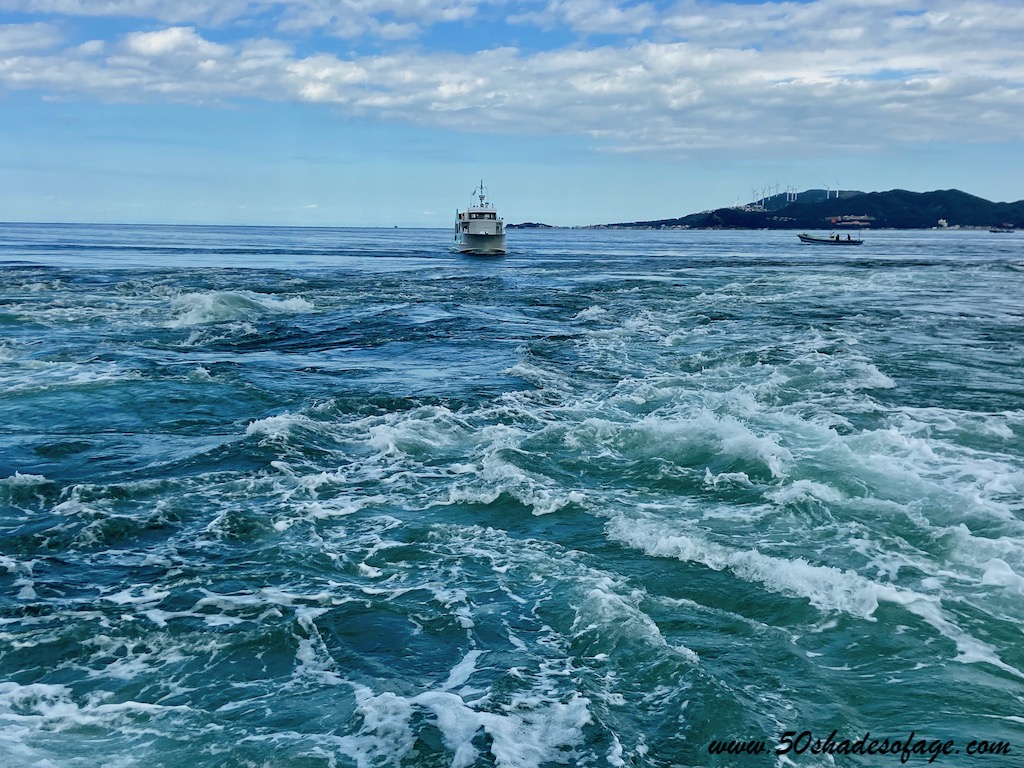
The scenic port city of Takamatsu was our intended destination where we stopped to visit the amazing Shikoku Mura open-air museum. There are over 20 restored traditional Japanese buildings and structures from the Edo and Meiji periods on display here within their natural environment set into the hillside. A big highlight was the vine and timber swing bridge over a small lake.
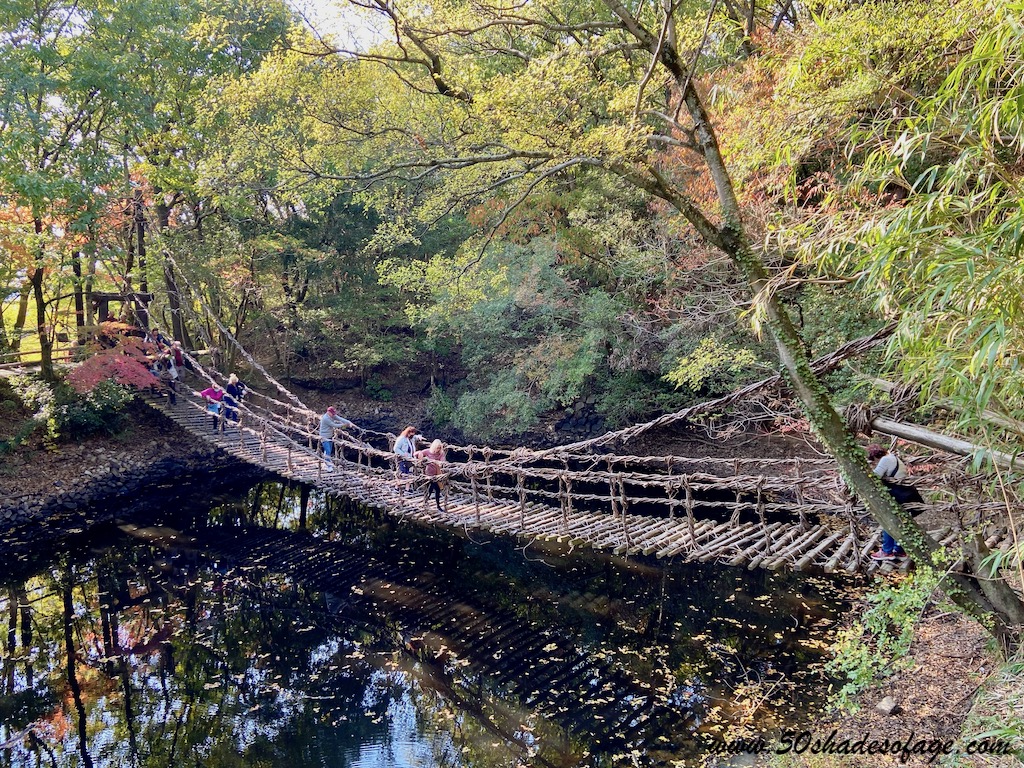
Before checking into our hotel for the night, we took a stroll around the beautiful Ritsurin Gardens – a National Treasure that dates back to the Edo period. The sprawling gardens comprise of six ponds,13 buildings, Okedoi-no-Taki waterfall, a tea house and an arched timber bridge, situated at the bottom of Mt Shiun.
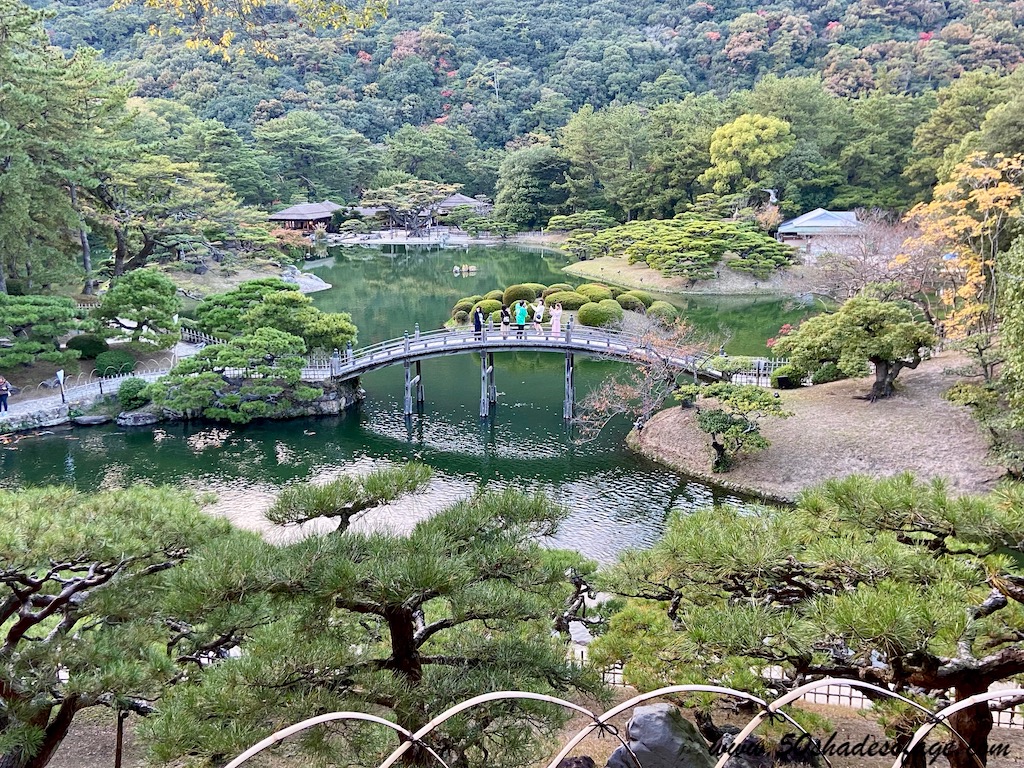
We stopped briefly in the castle town of Matsuyama to snap a picture of the famous castle perched high on top of a hill. We then visited the Isheteiji Temple where there were numerous large white Buddha statues adorning the entrance.
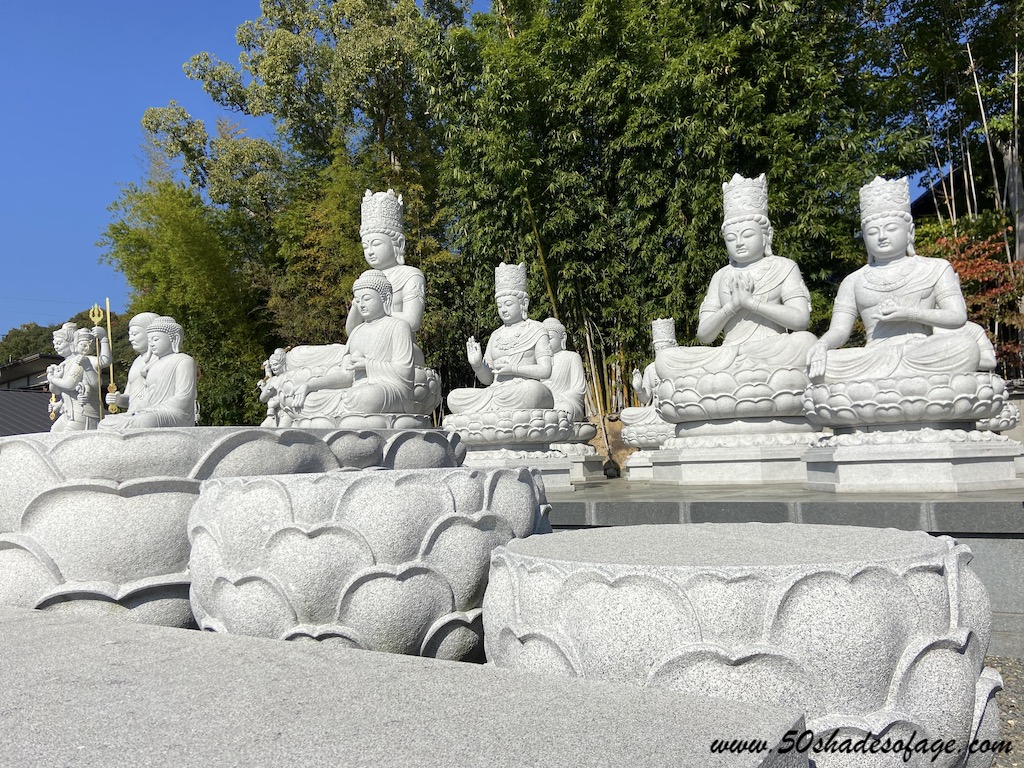
Lunch was at the historic Dogo Onsen, that although was under renovation, we were able to have a sneak peak. The interesting attraction here at Dogo Onsen was the large Botchan Karakuri Clock, that comes to life every hour and produces a magical performance of cute characters popping up and out of the clock choreographed to music.
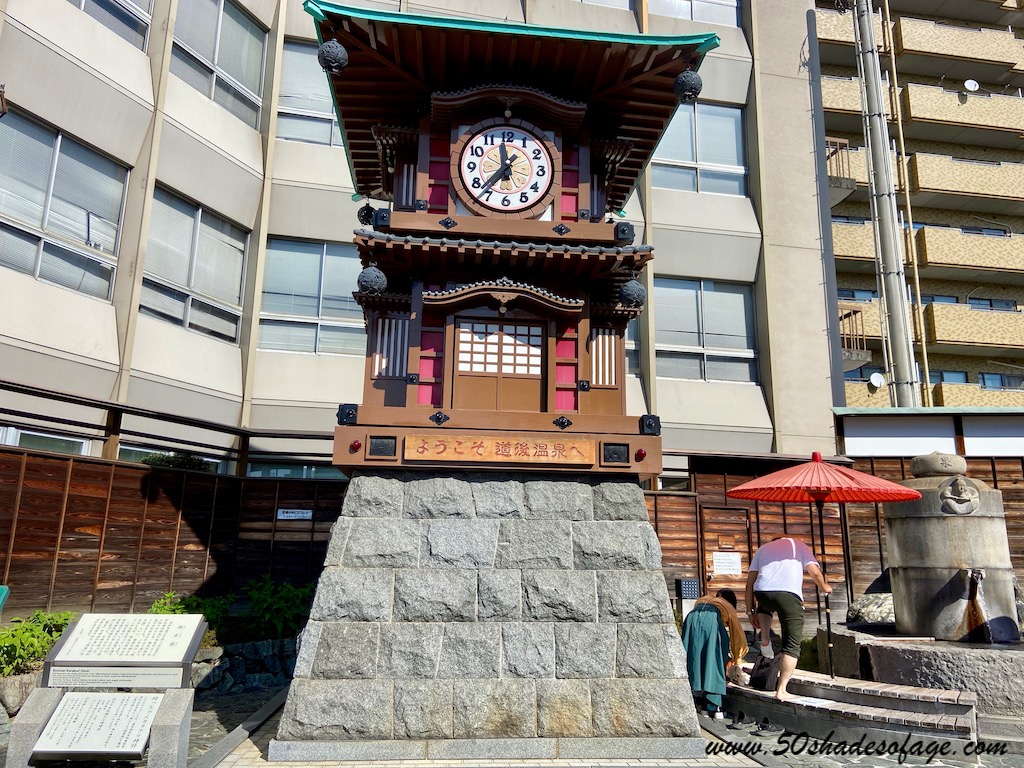
Our time on Shikoku Island was short-lived as we crossed the sea aboard a ferry at Misaki to the onsen city of Beppu on Kyushu Island. Set between Beppu Bay and volcanic mountains, it’s home to more than 2,000 onsens (hot springs) and is very popular as a hot spring resort.
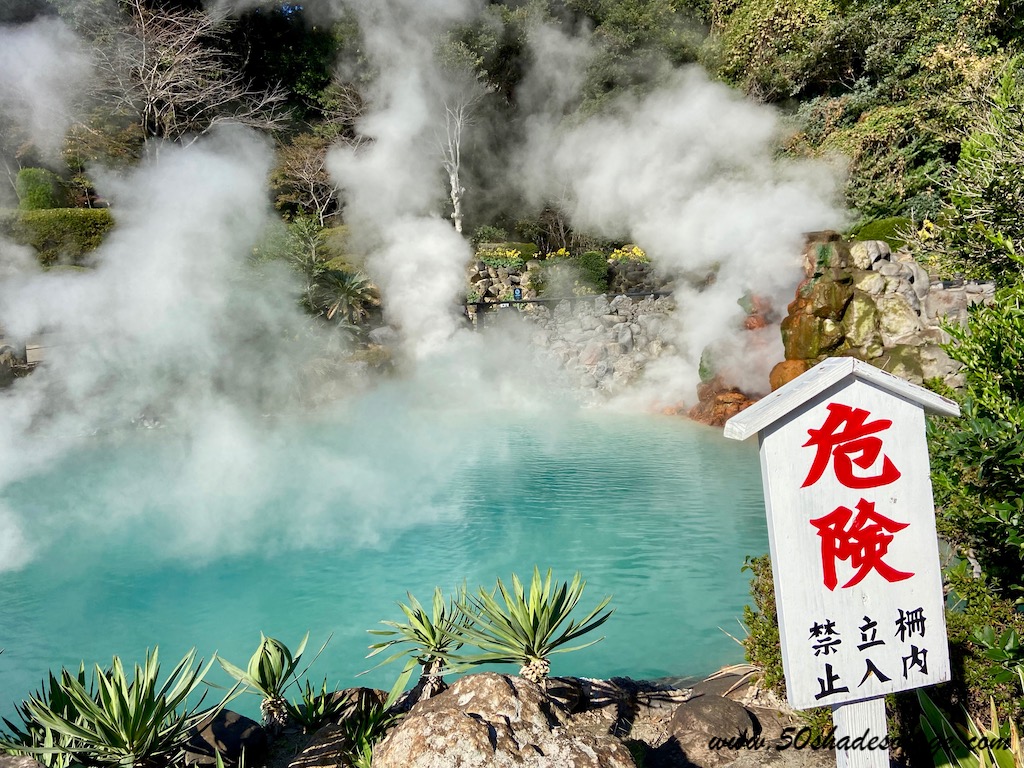
The entire island of Kyushu is renowned for its numerous hot springs or onsens. The most famous, being The Hells of Beppu, similar to the Rotorua thermal pools in New Zealand. There are seven bubbling and steaming pools (jigoku) that are as hot as hell, that vary in colour from a bright turquoise to a blood red colour.
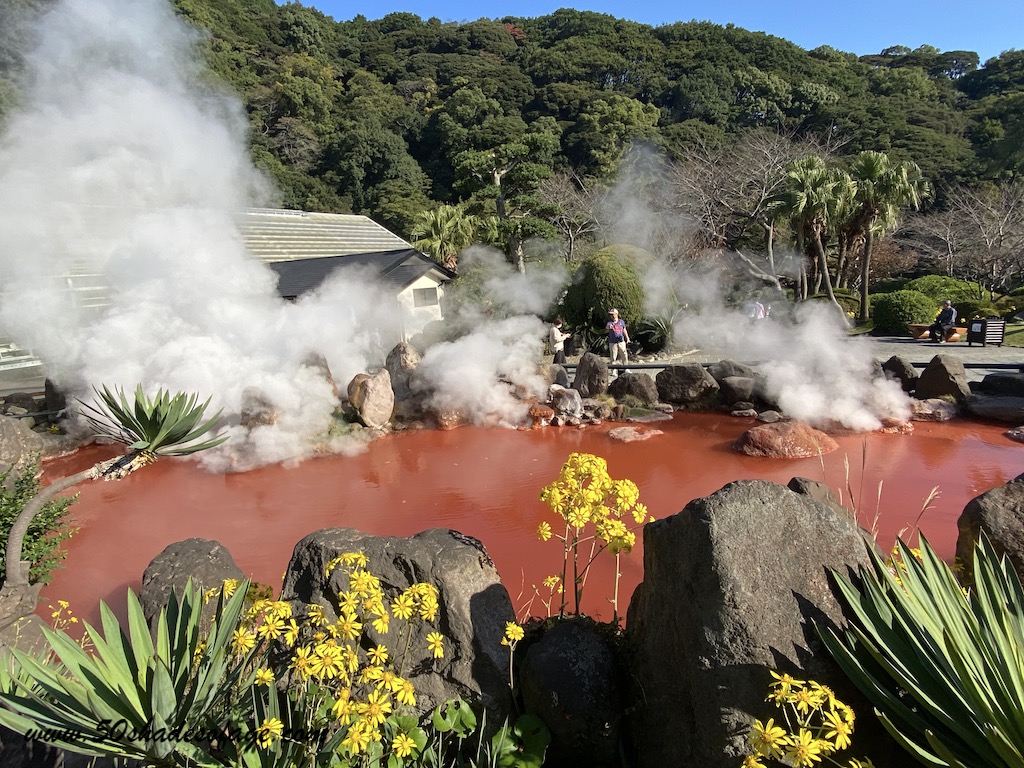
The major port city on the western coast of Kyushu, Nagasaki was our next destination. During the four-hour bus trip from Beppu we were rewarded with some of the most beautiful landscapes with active volcanic peaks, rocky, lush and near-tropical coastlines.
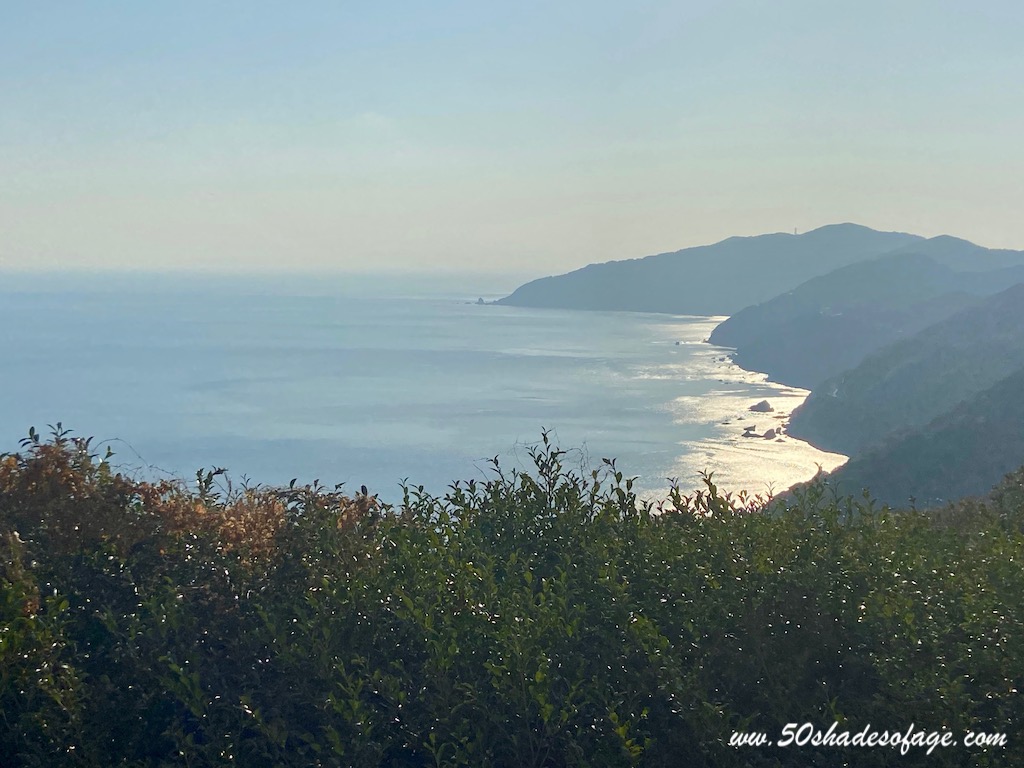
Once we wound our way down from the mountain range into the city of Nagasaki we could see that it is now a thriving modern city. Since it was utterly demolished from an atomic bomb during World War II, it has virtually been rebuilt from the ground upwards.
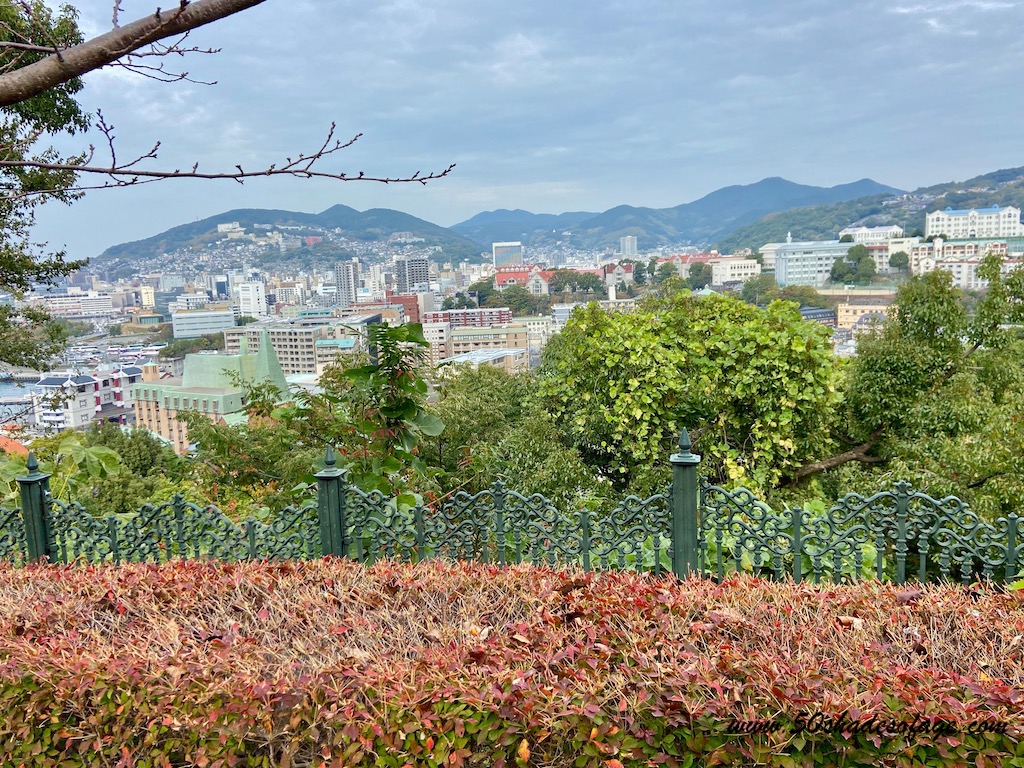
We immediately made a beeline to the Nagasaki Peace Park and the Atomic Bomb Museum. In what was an emotive and moving experience, the Peace Park and the Hypocenter Park, were the perfect place to contemplate and reflect on the horrors of war. The Museum was harrowing with its graphic galleries and displays of the aftermath of the bombing. It’s truly an experience that I would highly recommend, particularly the younger generation, to instil the message that the world does not need anymore wars.
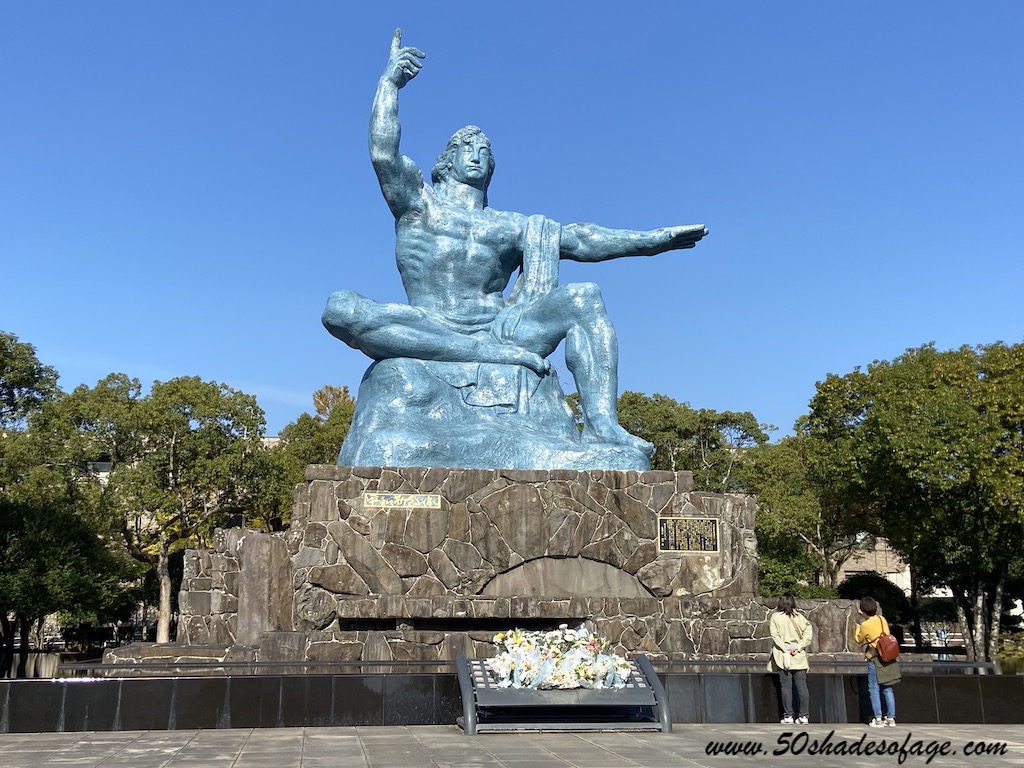
On day two of our stay in Nagasaki we started the day off with yet another heartrending experience by visiting the Twenty-Six Martyrs Monument and Museum. These 26 Christian missionaries were marched through villages of Japan and then executed on Nishizaka hill in Nagasaki by order of the Shogun to stem Catholicism.
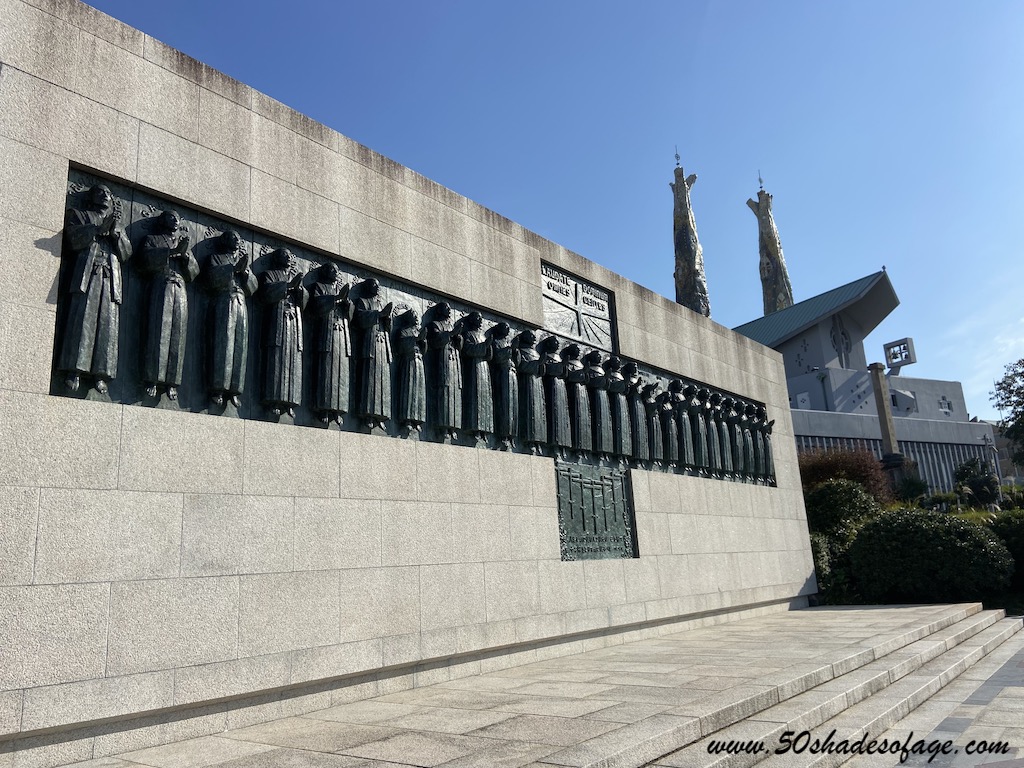
The Suwa Shrine, the major Shinto shrine in Nagasaki, situated on the slopes of Mt Tamazono-san, features a 277-step stone staircase leading up the mountain that really got our heart rates up. Here we encountered some cute little Japanese children dressed in traditional kimonos being initiated into Shintoism.
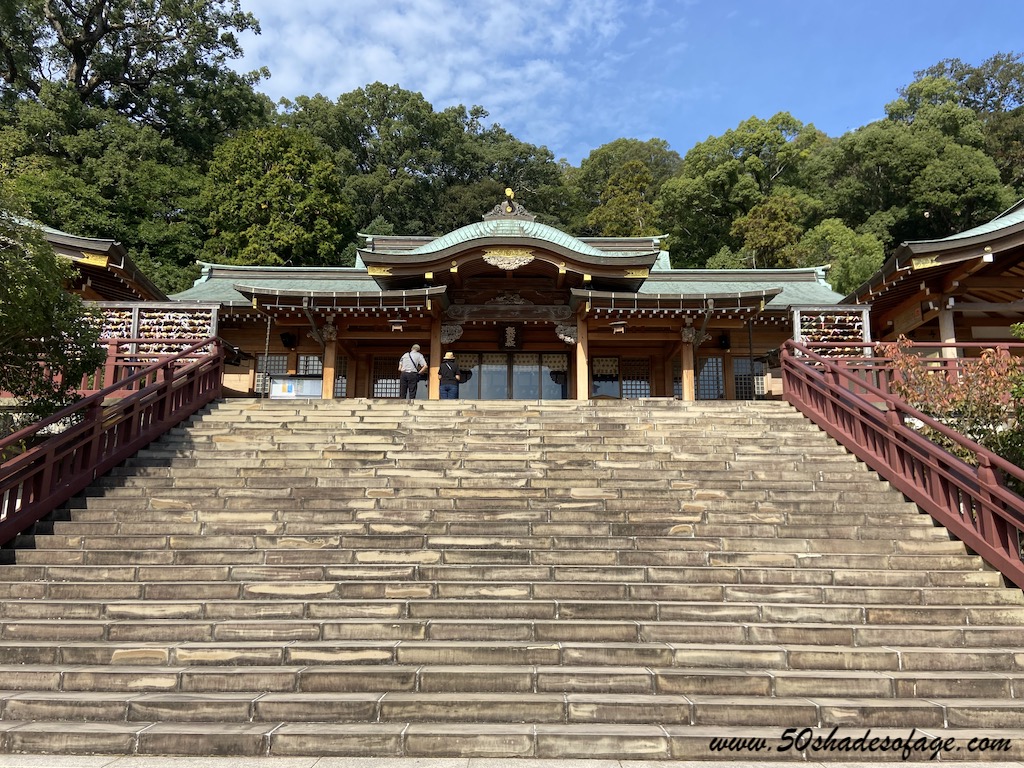
Afterwards we took a stroll around the port area of Nagasaki, where there are many ships and boats, with pretty gardens and restaurants/bars lining the natural harbour.
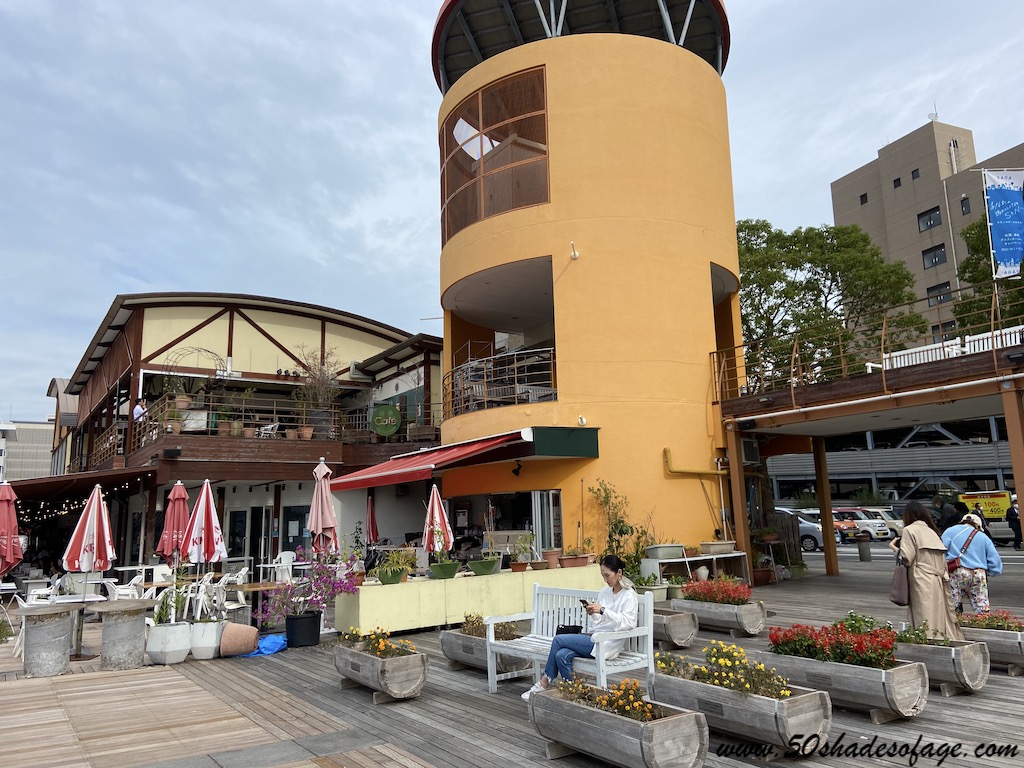
After lunch we explored Glover Garden, where there are six re-located Western style mansions, that were once home to Nagasaki’s wealthiest foreign diplomats and traders. The walk up to the hillside park was via a paved road, where there were many souvenir shops and eateries, Oura Catholic Church and a very interesting children’s book museum. From the top of the hill there were commanding views over Nagasaki and the harbour.
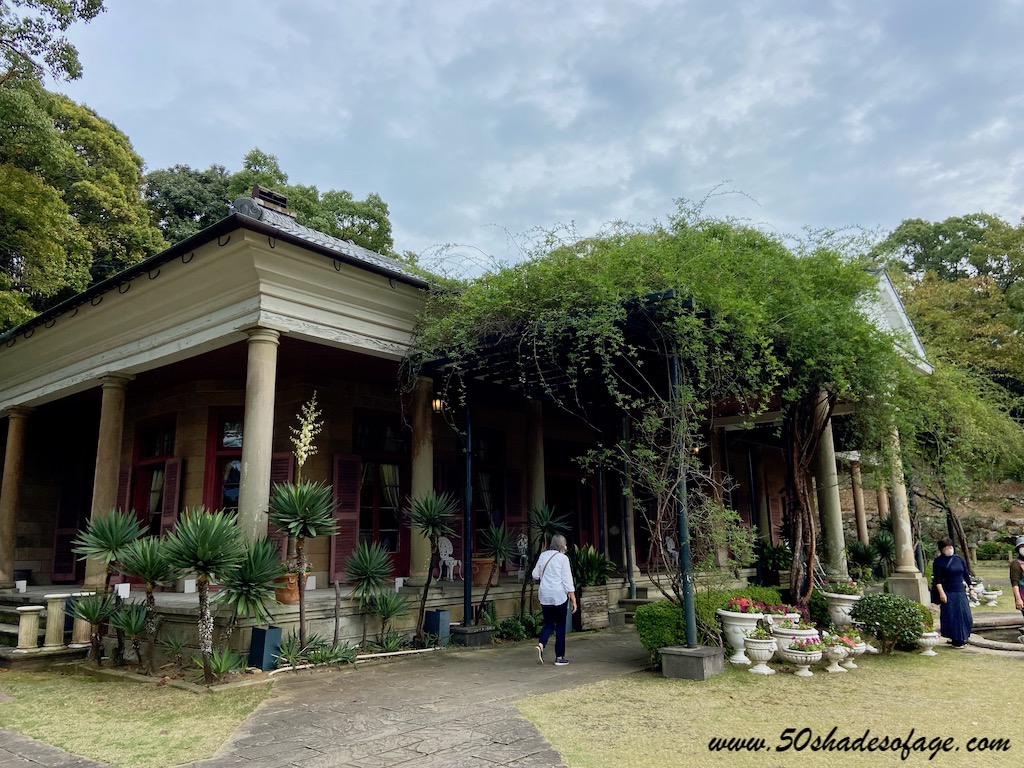
It was a long drive from Nagasaki back to the main island of Honshu, that involved another lengthy bridge crossing over the strait. Once we arrived into Hiroshima late in the afternoon, we immediately went to the Peace Memorial Park, where we had free time to stroll around.
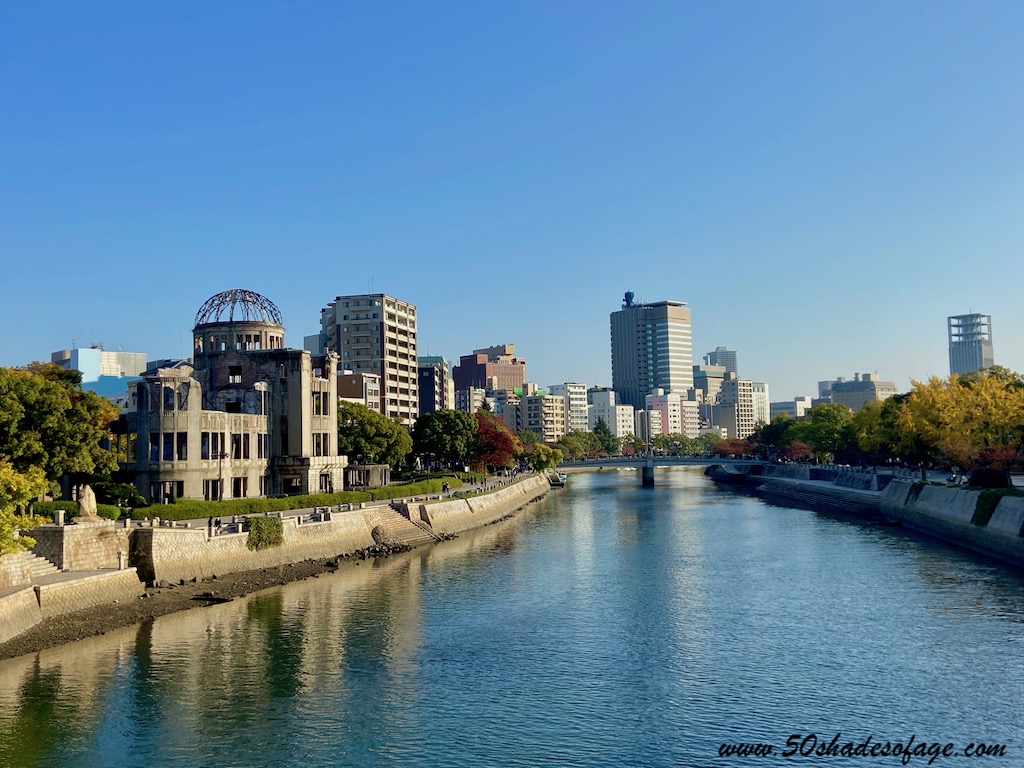
In the park we observed the ruins of Genbaku Dome on the banks of the river, one of the few buildings that was left standing near ground zero after the atomic bomb in World War II. We strolled around the park stopping at the Children’s Peace Monument, the Cenotaph and Peace Flame. We also visited the Peace Memorial Museum, displaying substantial memorabilia and pictures from the bombing, that was once again an emotive experience.
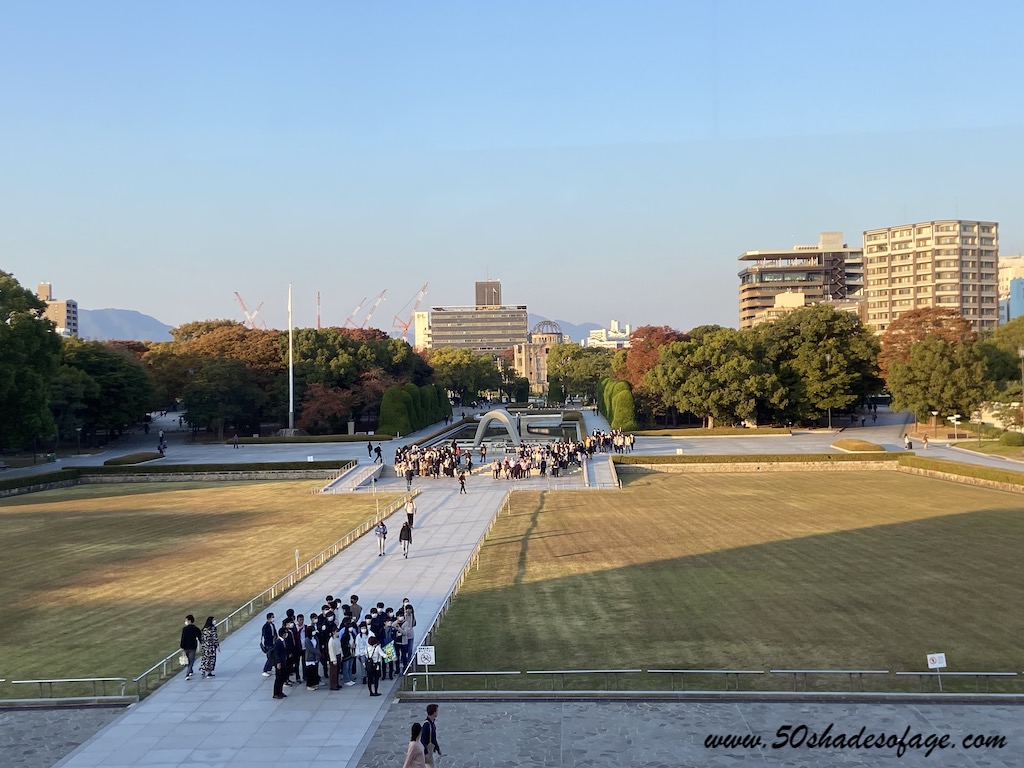
In what was one of the many highlights of our trip to Japan, we caught a ferry from Hiroshima Bay to Miyajima Island, best known for the partially submerged giant, vermillion Great Torii Gate. However, we were to discover that there was much more to this island, also called Itsukushima, than just the shrine.
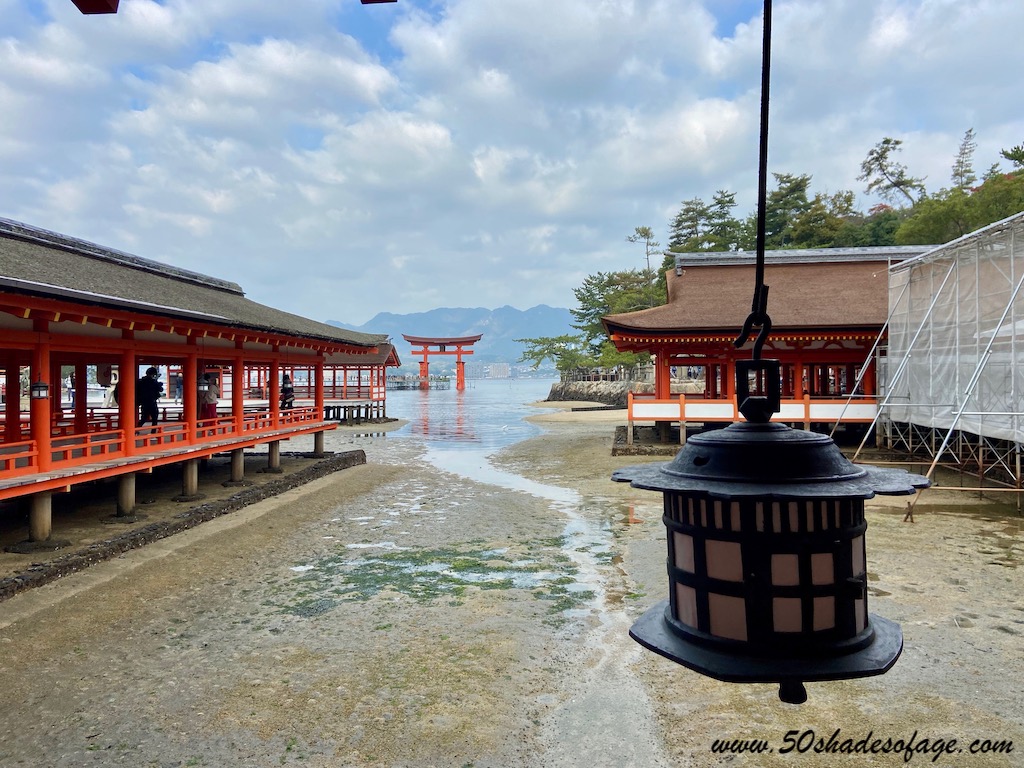
Luckily we got there early, because the crowds were starting to come in after we arrived. We took the short walk from the ferry terminal towards the shrine, taking many photos as we went of the deer that were wandering around the island. We walked through the shrine and across a makeshift bridge to the Great Torii Gate, before returning and walking around the shrine area and red arched bridge.
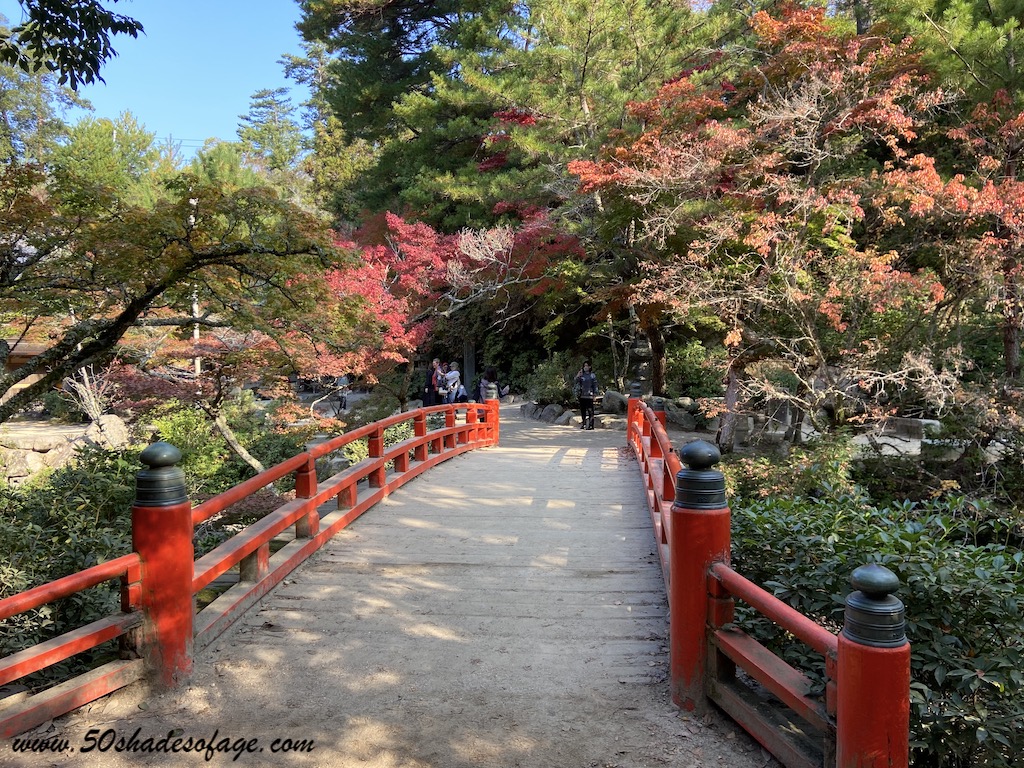
Eventually we walked uphill towards the forested area, where there were more deer, beautiful autumn colours on the foliage of the trees and a small stream. We then walked back down the hill past the five-storey pagoda and Senjōkaku Hall to Machiya Street – an old fashioned row of 1950s style shops and cafes.
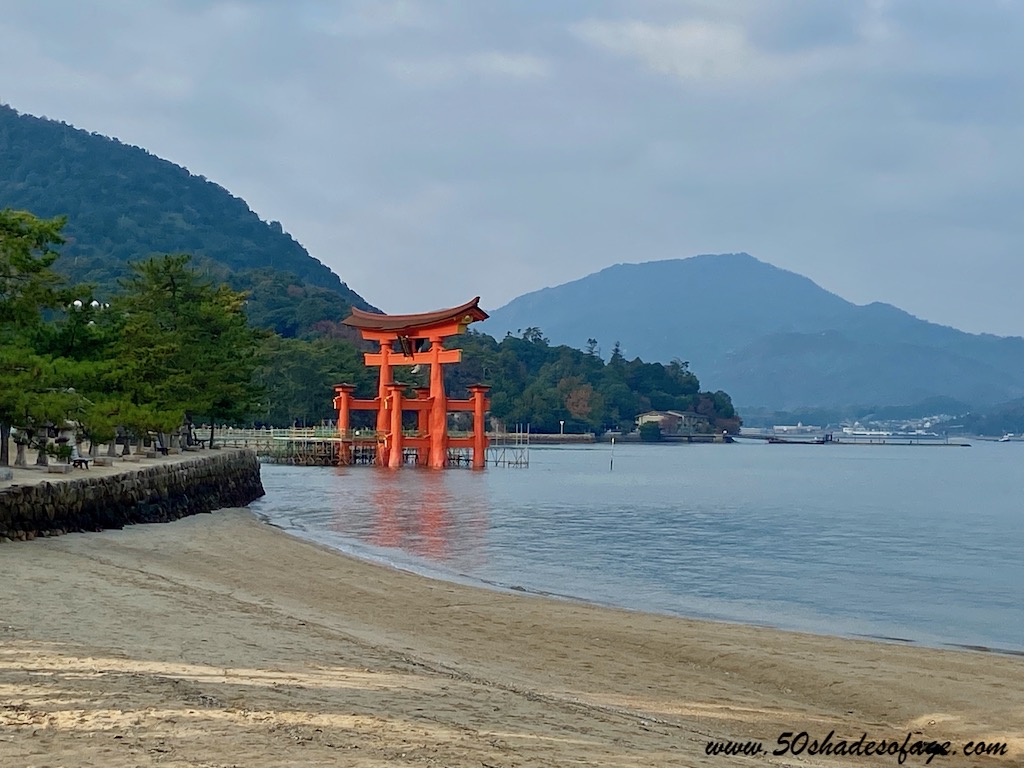
After grabbing a coffee and purchasing some uniquely crafted souvenirs, we had to board the ferry to return to Hiroshima and then make our way to our next stop of Himeji.
The main purpose of our visit to Himeji was to see the Himeji Castle, the largest and most visited castle in Japan. Also called the ‘White Heron Castle’, this 17th century castle is both a national treasure and a world heritage site.
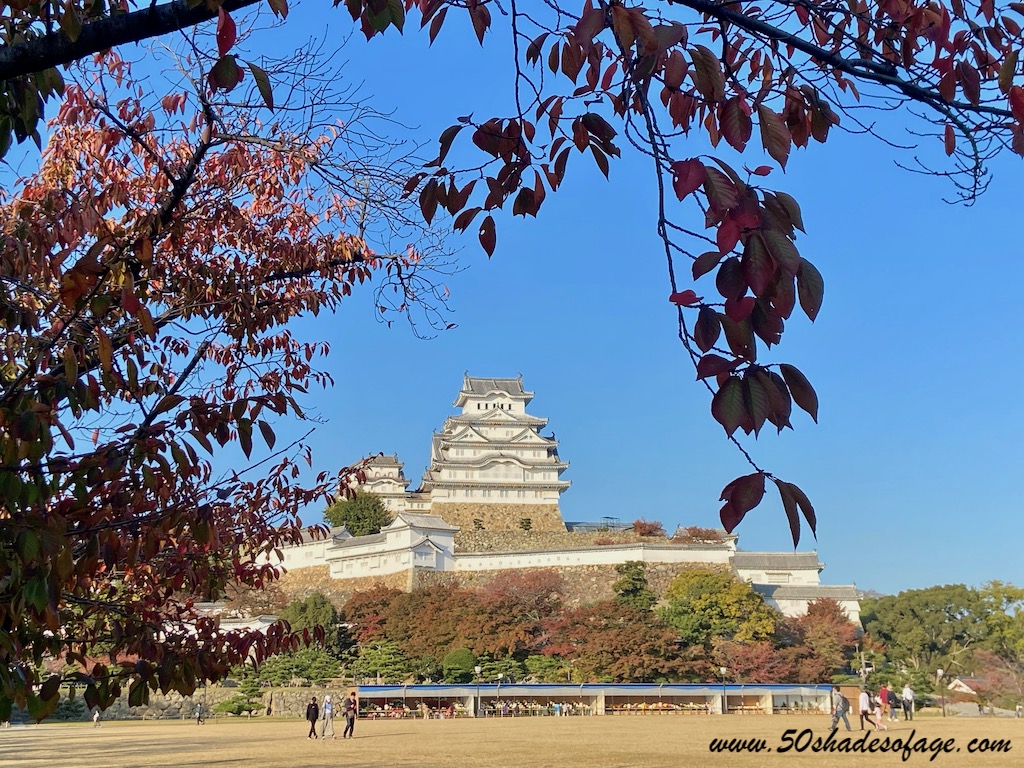
We were able to enter the castle via the lower floor and climb upwards via a series of steep, narrow staircases. Each level gets progressively smaller as you ascend to the top, from where you get a bird’s eye view of the extensive grounds surrounding the castle and the city of Himeji.
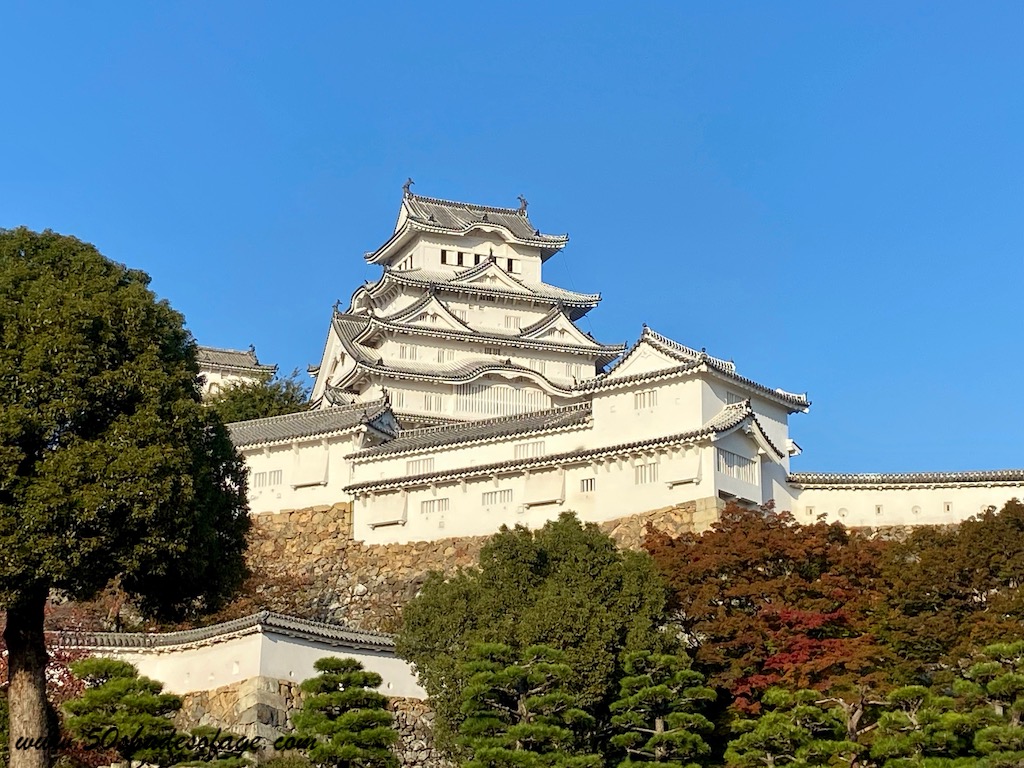
Afterwards we walked to Himeji Station where we caught the bullet train (Shinkansen) to the city of Osaka where we spent the night.
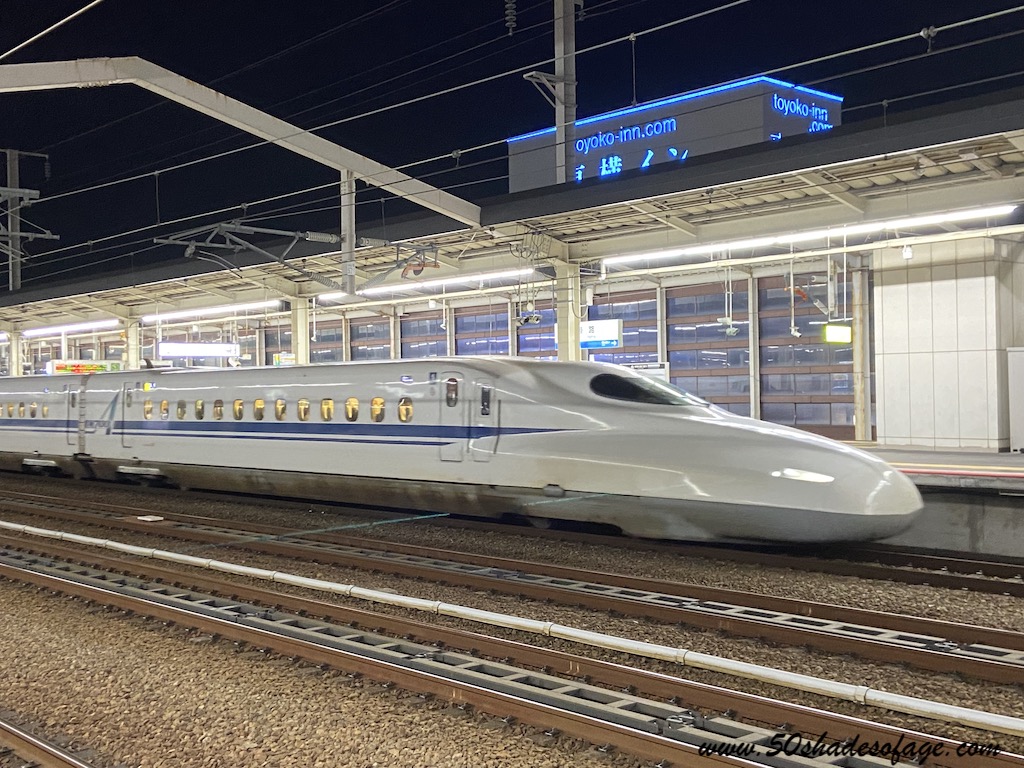
It was a 300 kilometre bus trip from Osaka to Kanazawa, so we left early to travel to this castle city located on Japan’s central Honshu Island. We arrived into the Higashi Chaya district in Kanazawa and set off exploring in the pouring rain. There were many well-preserved wooden teahouses and merchant houses that sold beautiful jewellery, linen and ceramics.
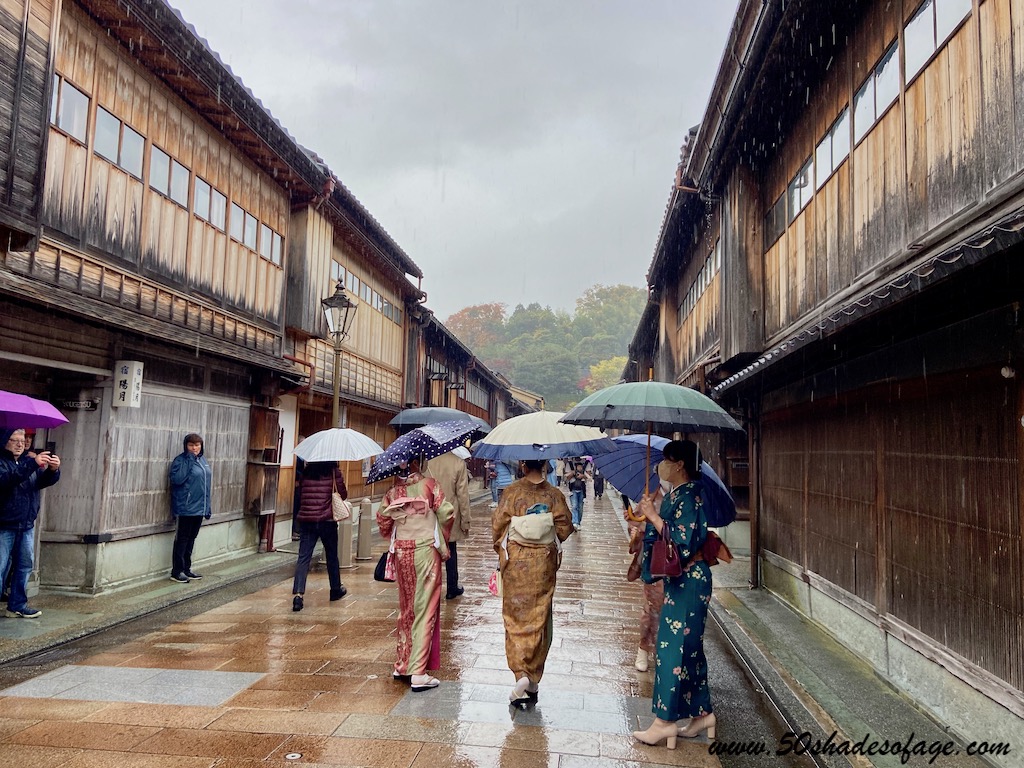
Without a doubt, Kanazawa’s main attraction is Kenrokuen, one of Japan’s “three best landscape gardens” and considered the most beautiful of them all. Fortunately, the rain stopped and we were able to stroll around these magnificent gardens that put on a vibrant and diverse show of autumn leaves. I was mesmerised by the lower lake where there was a quaint old teahouse and autumn trees adorning the shoreline.
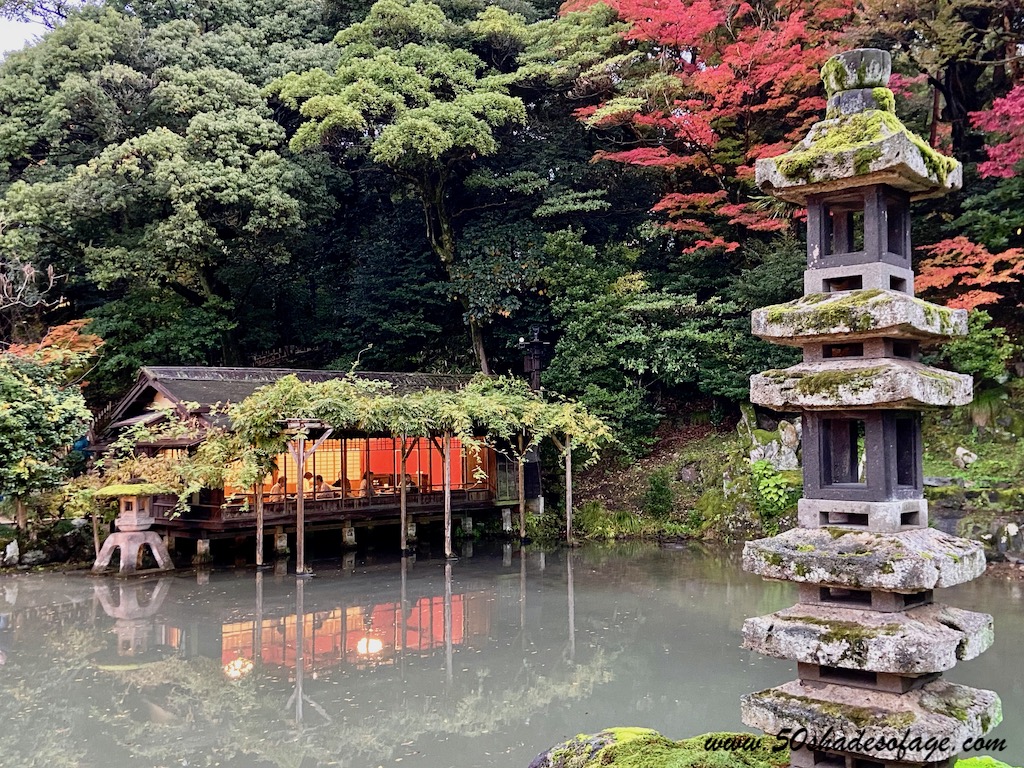
Opposite Kenrokuen was the bridge and entrance to Kanazawa Castle, that dates back to the end of the Edo period in 1583.
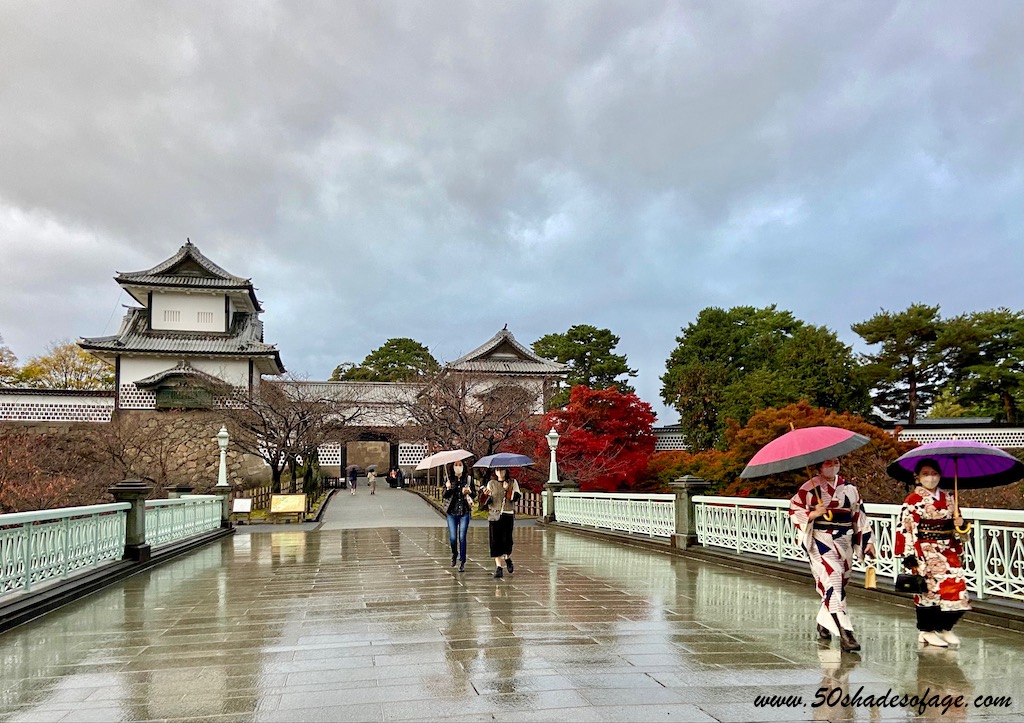
We wound our way through the Japanese Alps the next morning, with mountainsides enveloped in swathes of red, orange, and gold autumn-leafed trees. The historical village of Shirakawa-go was our first stop, where we took a step back in time witnessing what a small rural village looked like two centuries ago.
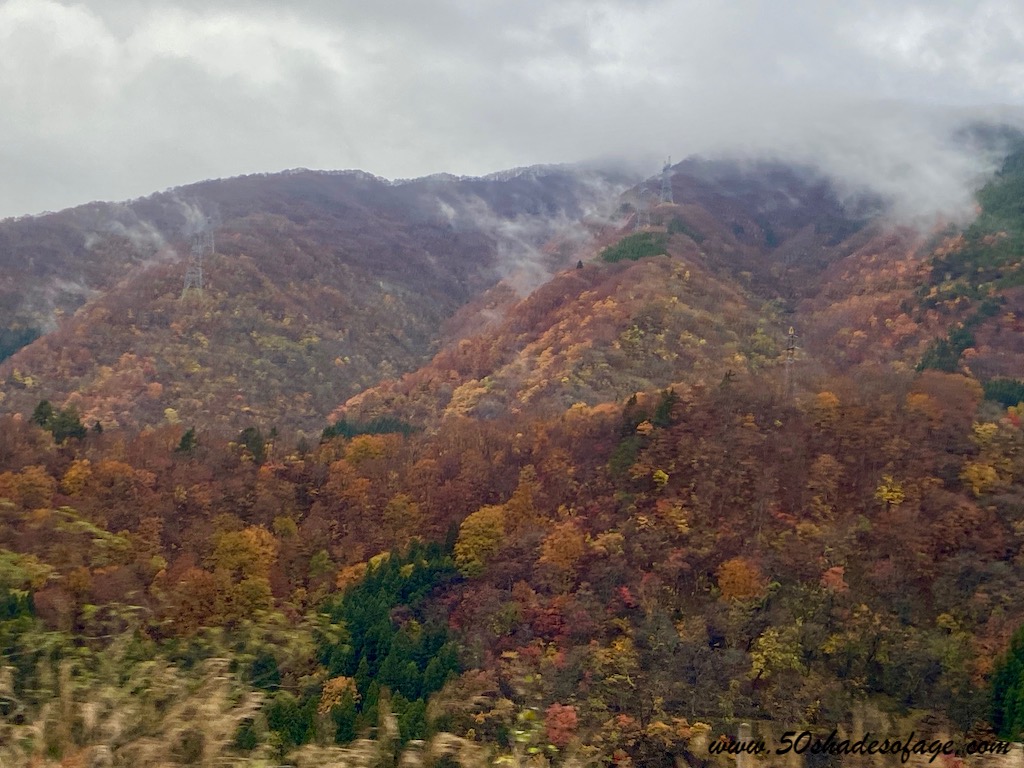
The traditional thatched roof farmhouses, or gassho-zukuri style houses and outbuildings, look like something out of a fairytale. This UNESCO World Heritage Site is nestled in a valley at the foot of Mt Hakusan and is a living outdoor museum.
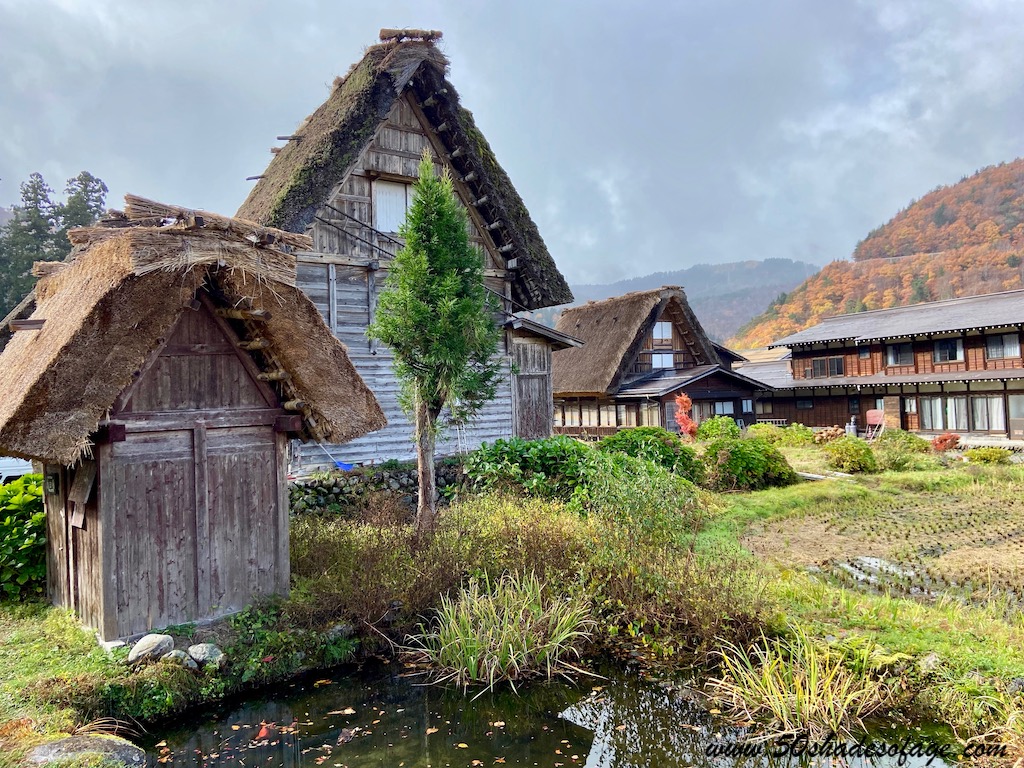
We strolled around the village that has some homes open for public viewing, demonstrations of local craft, restaurants and souvenir shops. We took the climb up to the Shirayama observatory, for incredible views over the entire village.
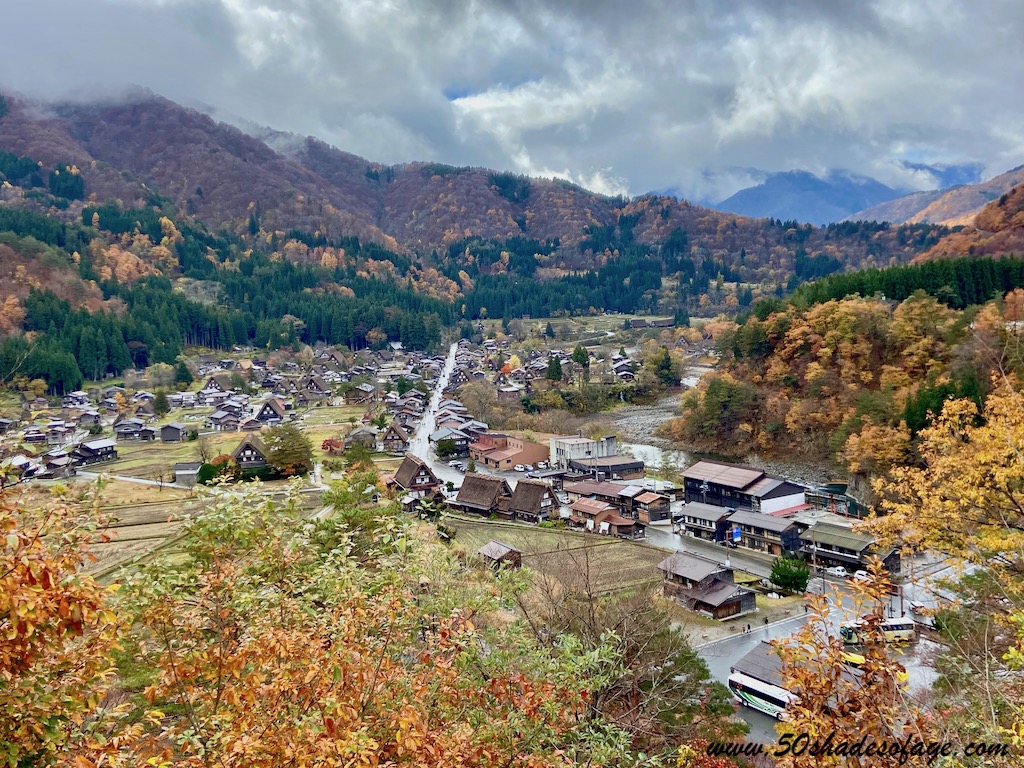
Our lunch stop was in Takayama, that is in the mountainous Hida region and is a popular tourist city for its beautifully preserved old town in the Sanmachi area. This former merchant district consists of narrow streets with old latticed wooden buildings, pretty homes, restaurants and sake breweries.
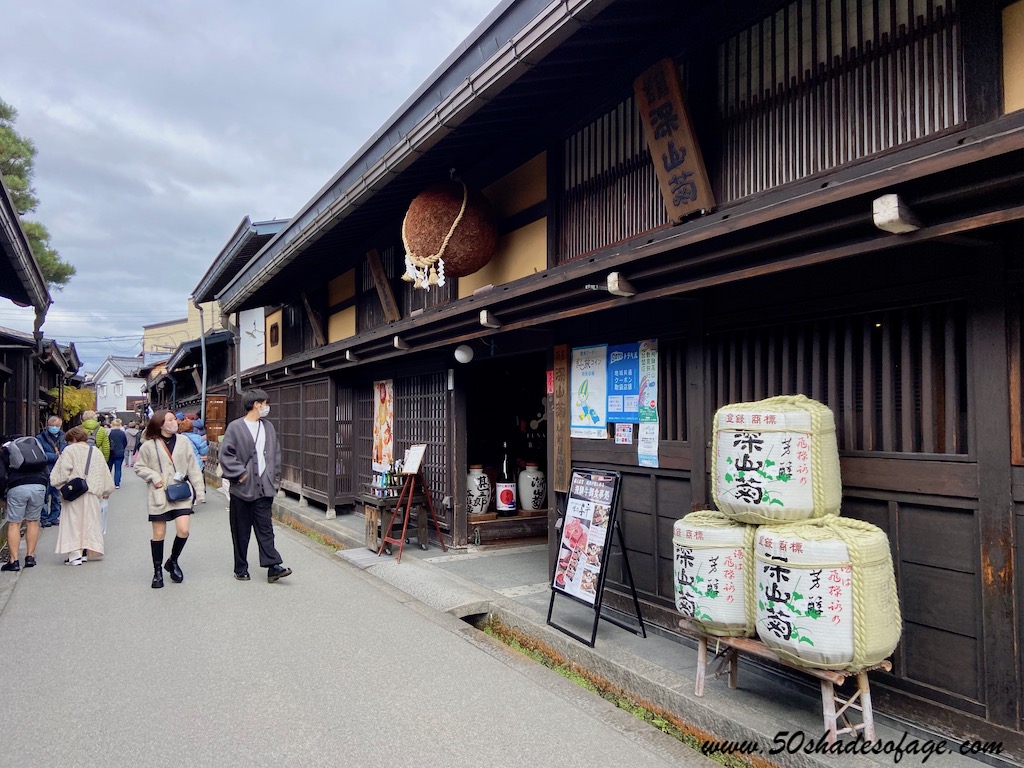
We wandered the streets, browsed the shops, tasted some sake and had an amazing meal of ramen in a quaint little restaurant tucked away off the street.
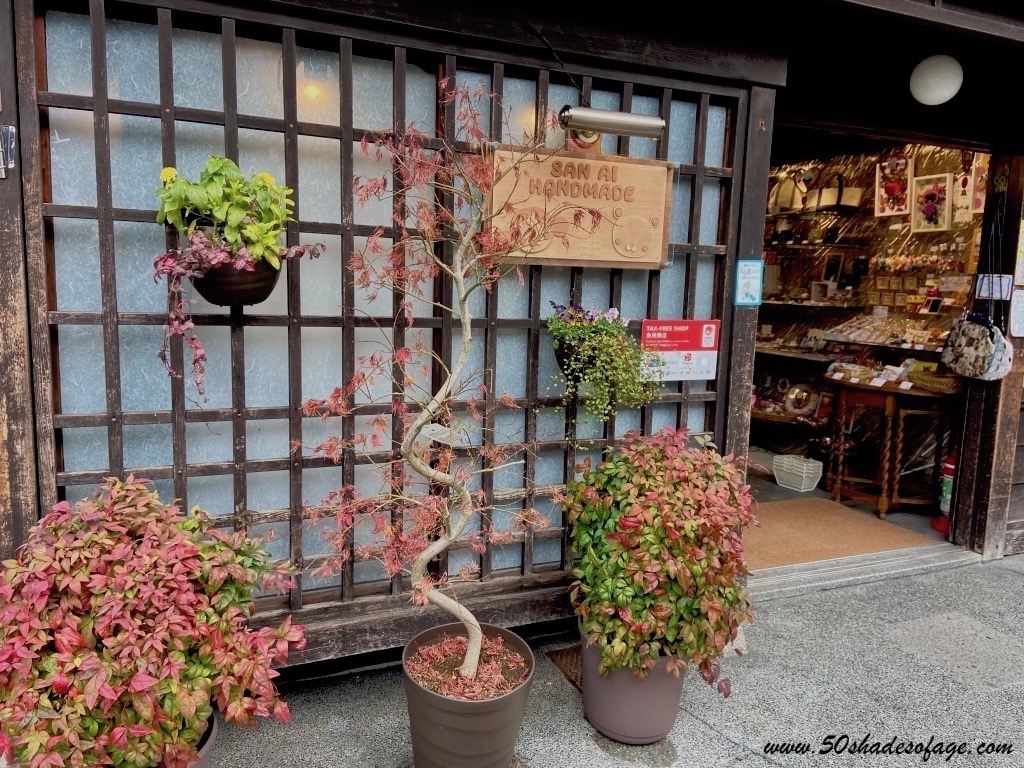
We arrived into the castle city of Matsumoto in the late afternoon, where we checked into our hotel for an early night and early start the next morning. Matsumoto Castle, the ‘Crow Castle’ because of its dramatic black exterior, was a sight to behold in the early morning sunshine.
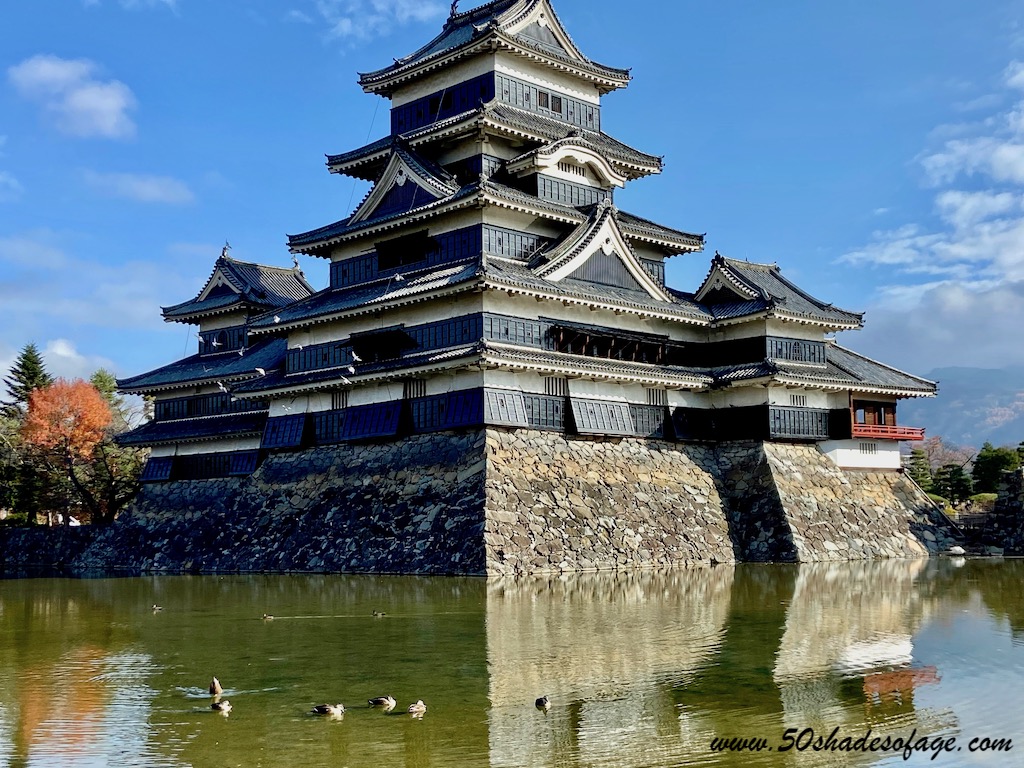
It is one of five castles designated as ‘National Treasures of Japan’ and also the oldest with its five-tiers, six-storey castle tower. Once we entered the castle grounds we were met by characters dressed as Samurais and Ninjas. It was a great opportunity for a photo with these characters with the backdrop of the castle in the background.
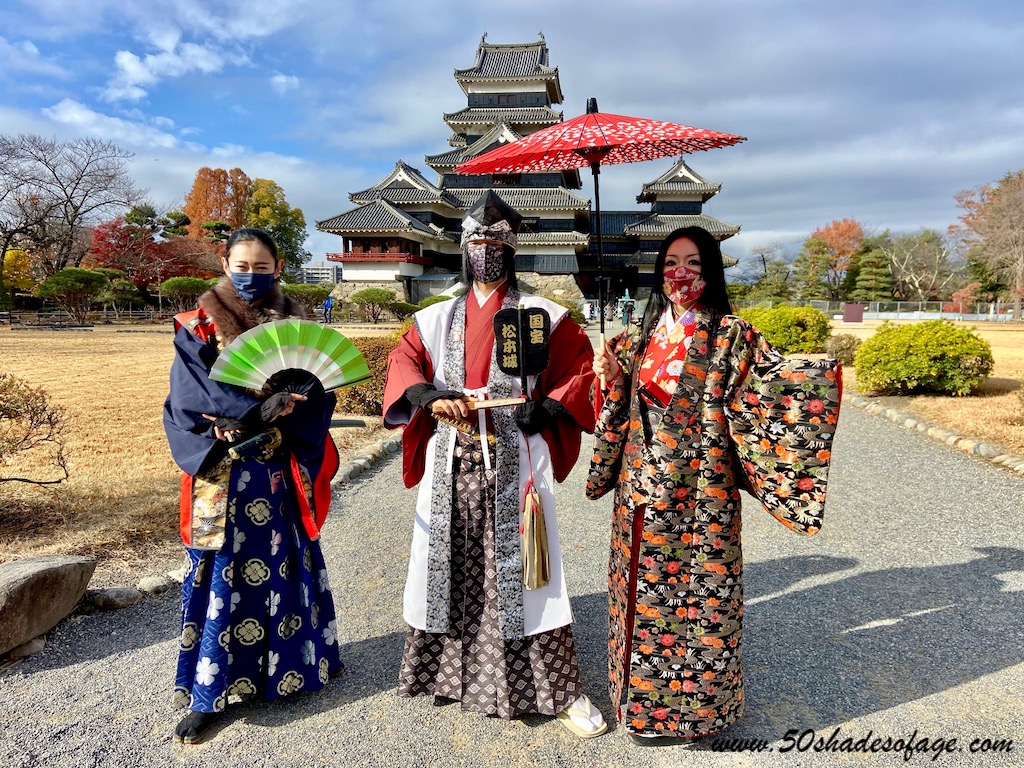
Scaling to the top of the castle, up narrow staircases that were more like ladders, we wound our way to the top tier and were able to take in the magical views over Matsumoto.
It took us three hours to reach our next destination on winding mountain roads through the Japanese Alps. Mt Fuji, possibly the most recognised and revered mountain peak in the world, standing at 3,776 metres high, did not disappoint. We spiralled our way to Mt Fuji Fifth Station, that is approximately half way up the mountain and the starting point for the hike to the summit.
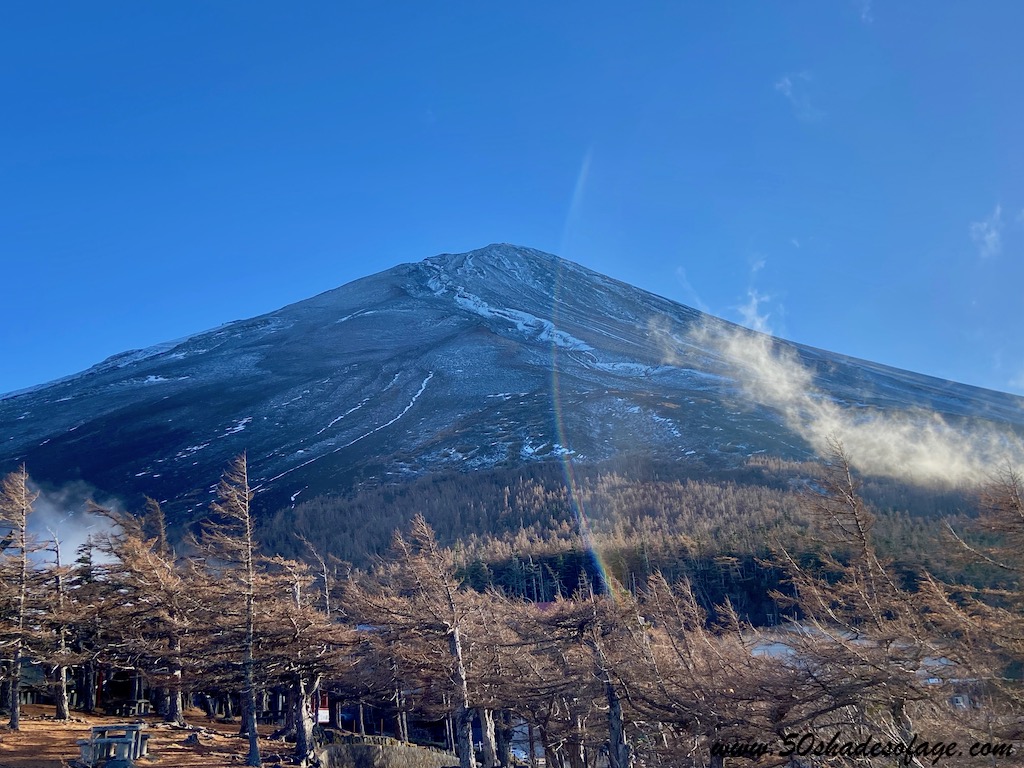
Here we had free time to take photos of the snow-capped peak of the mountain and luckily the clouds cleared in time for us to get a clear shot of the crater-shaped apex. We strolled around Fifth Station taking in the breathtaking views over Fujiyoshida and Lake Yamanaka from the lookout. We also browsed the great souvenir shops housed within the chalet-style building.
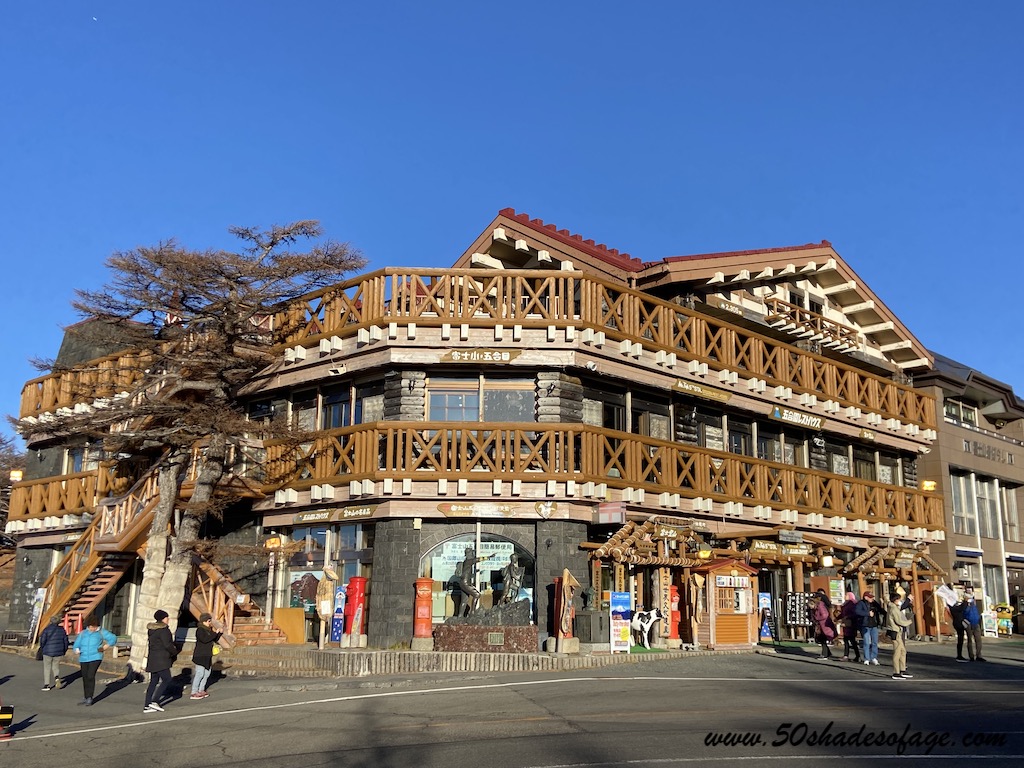
As the sun was setting, we drove back down the mountain to Lake Kawaguchiko, one of the Fuji Five Lakes and the most accessible. With its backdrop of the looming Mt Fuji and lovely lakeside walking paths and gardens, this town was picture-postcard perfect.
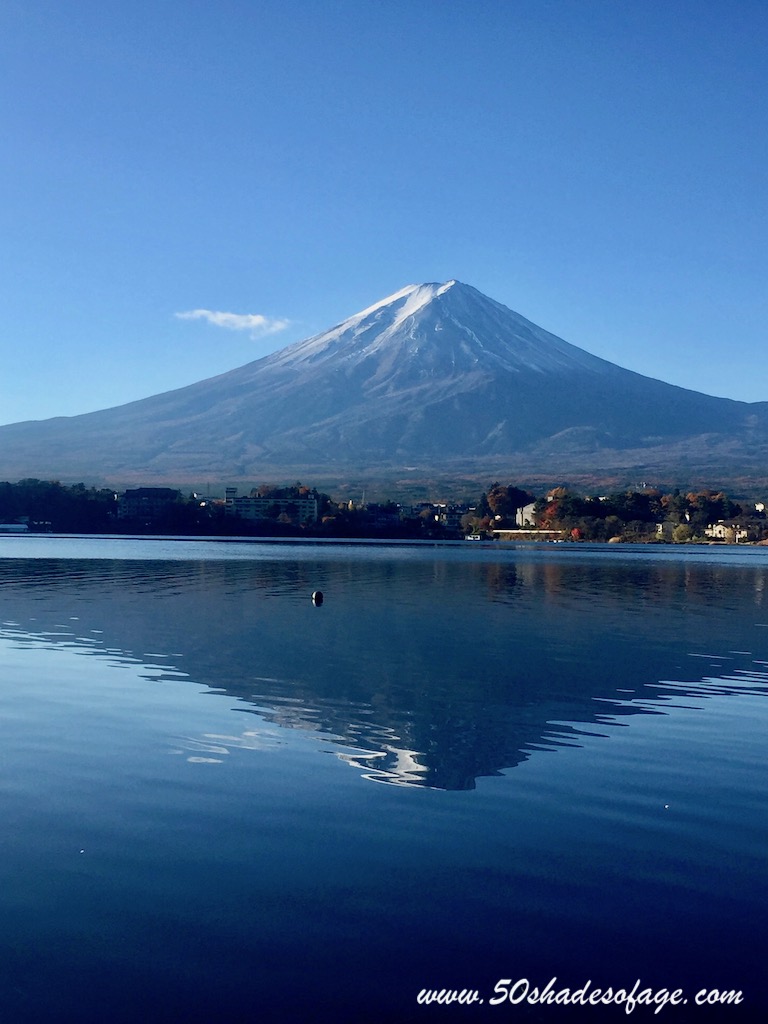
We awoke to a beautiful sunny, clear morning and immediately set out for a walk around the lake to capture the beauty of the lake and Mt Fuji reflections. Afterwards our bus driver took us to another perfect spot on the lake that featured lovely landscaped gardens where we could get even more fabulous photos of Fujisan.
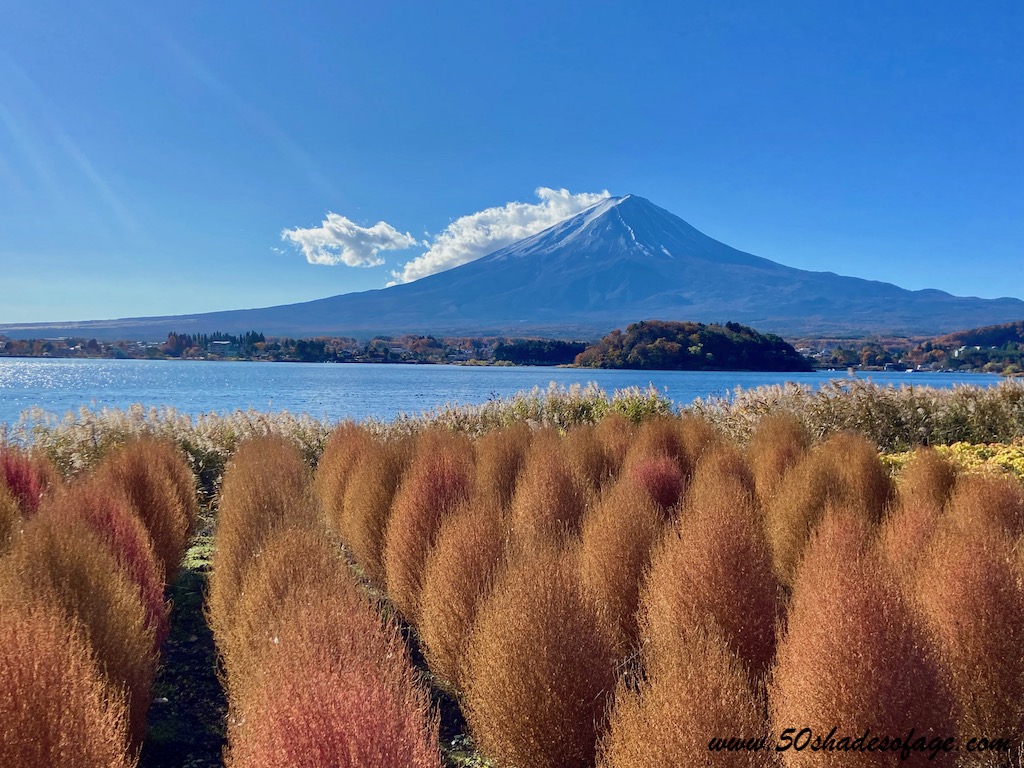
Our next stop was at Itchiku Kubota Art Museum, that we discovered was surrounded by brilliant autumn colours. The gallery is a unique architectural structure – very Gaudi like, with all the walls made of Ryukyu limestone (coral reef fossils). It features many exhibits, a shop and an open-style cafe on the balcony on the top floor of the building.
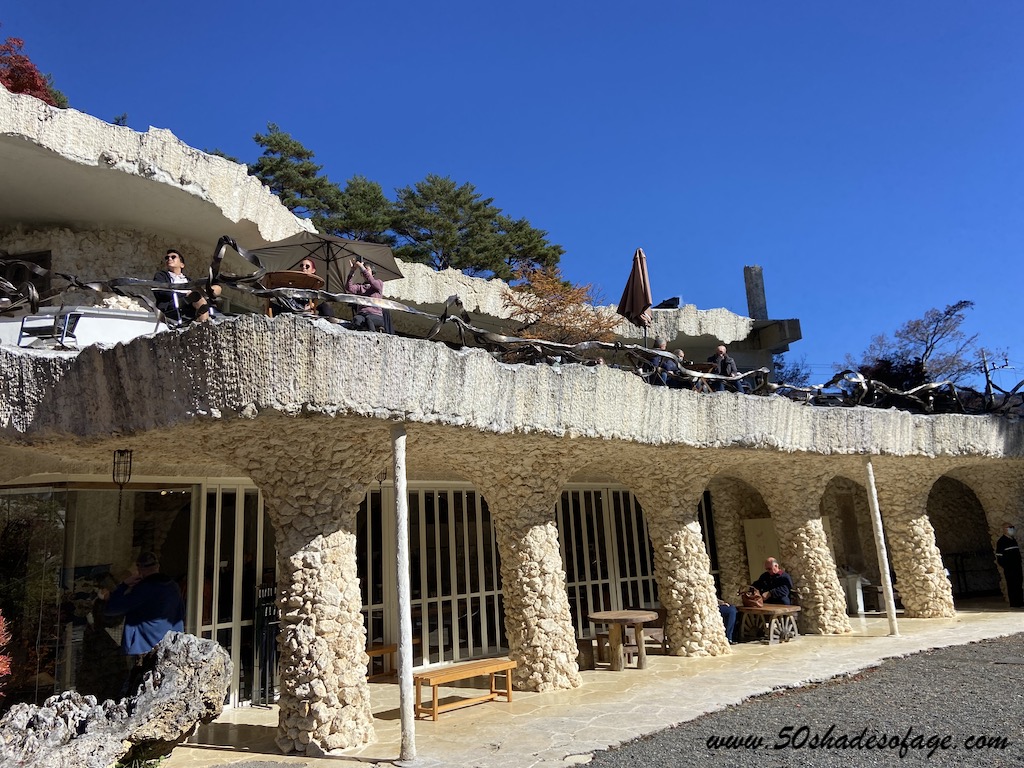
The main building behind the gallery is pyramid-shaped utilising 16 wooden beams more than 1,000 years old. There are some interesting exhibits contained within, including an extensive collection of Tsujigahana silk dyed kimonos from the Muromachi era, by artist Itchiku Kubota. These are absolutely stunning and are singularly well worth the visit.
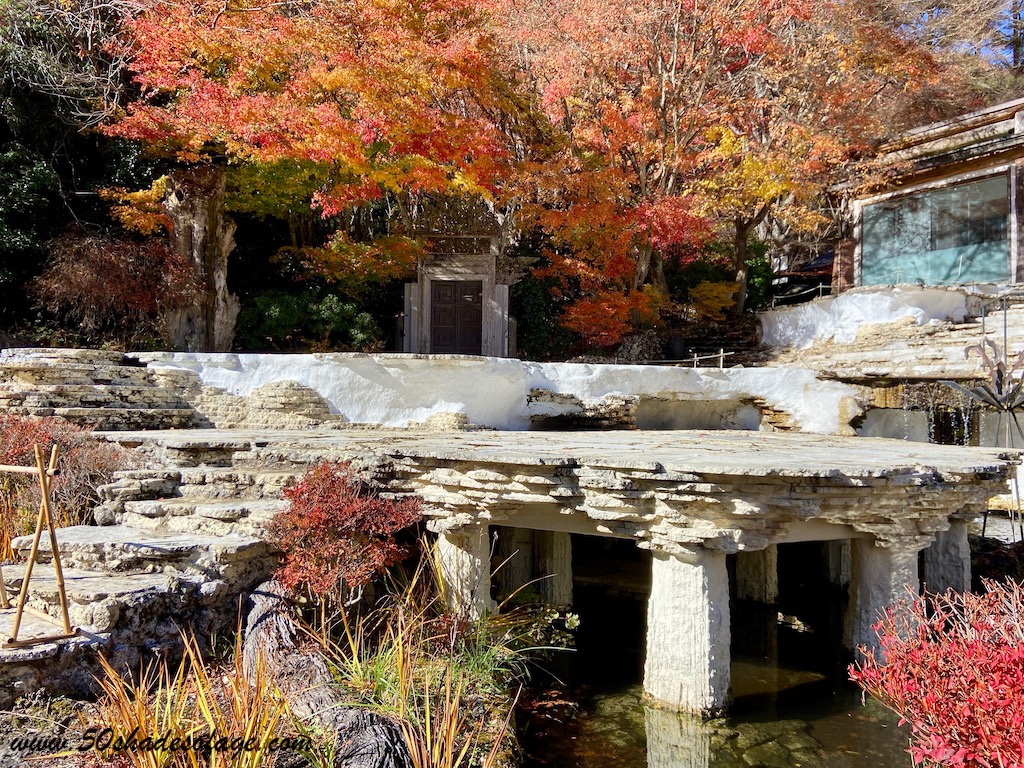
The traditional tea house and the gardens in the wooded hills behind the galleries are also worthwhile visiting.
Our final destination was the Japanese capital city of Tokyo, where we immediately went up to the observation deck at the top of the Tokyo Metropolitan Government Building to enjoy the panoramic views of this vast city. Our bird’s eye view really put the magnitude of this enormous city into perspective. We could see Mt Fuji in the distance and we got a lovely view of Shinjuku Gyoen National Park ablaze in autumn colours.
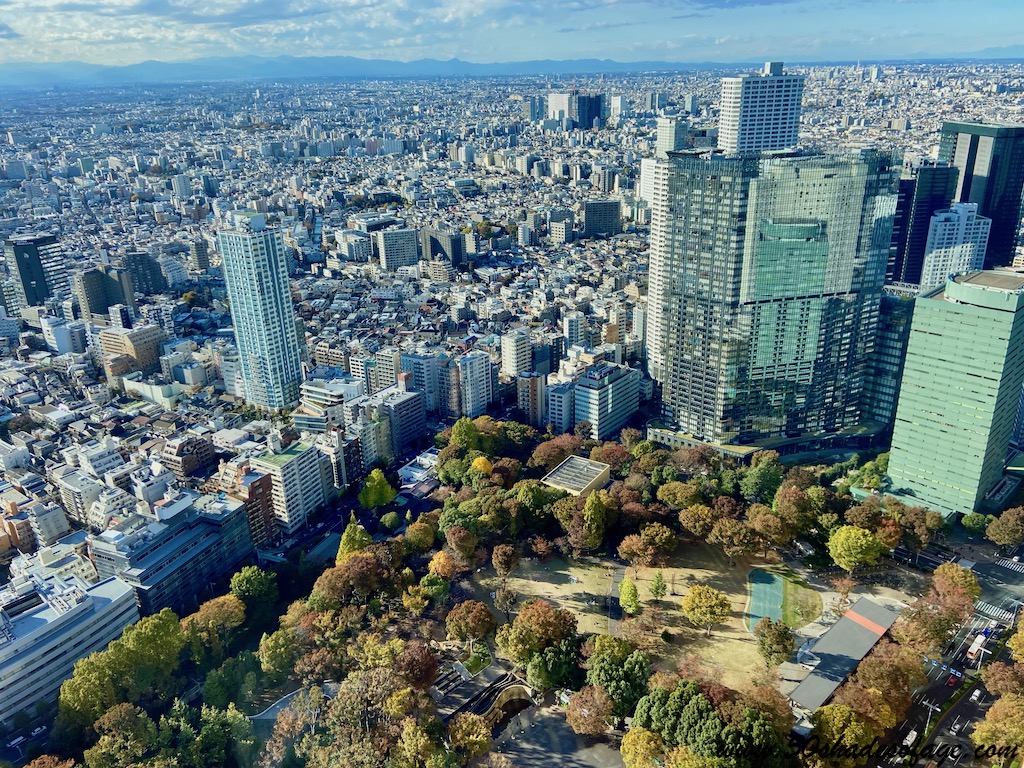
Our accommodation was in Koraku right near the Tokyo Dome City with a Baseball Stadium and Amusement Park. We ventured out that night for dinner and checked out the area surrounding the stadium and amusement park.
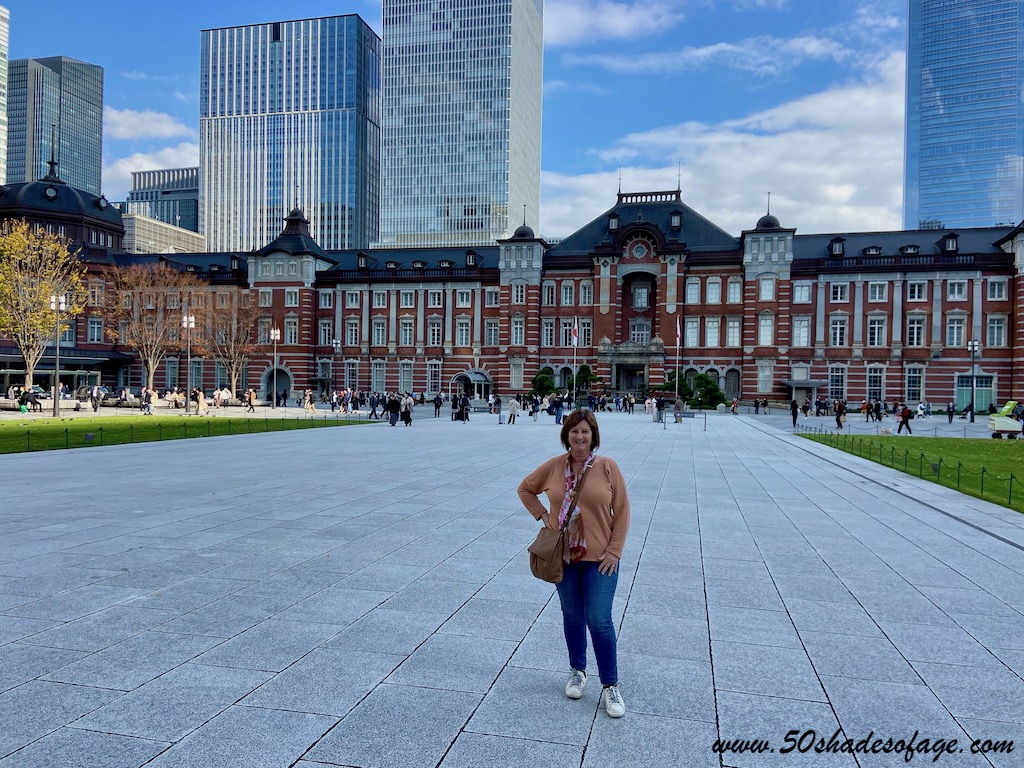
The next day we had a full agenda of seeing the sights of Tokyo. We started at the Sensō-ji Buddhist Temple with its imposing entrance gate and large red lantern. The shopping street at the front of the temple called Nakamise, was a great place to snap up some Japanese souvenirs and something to eat.
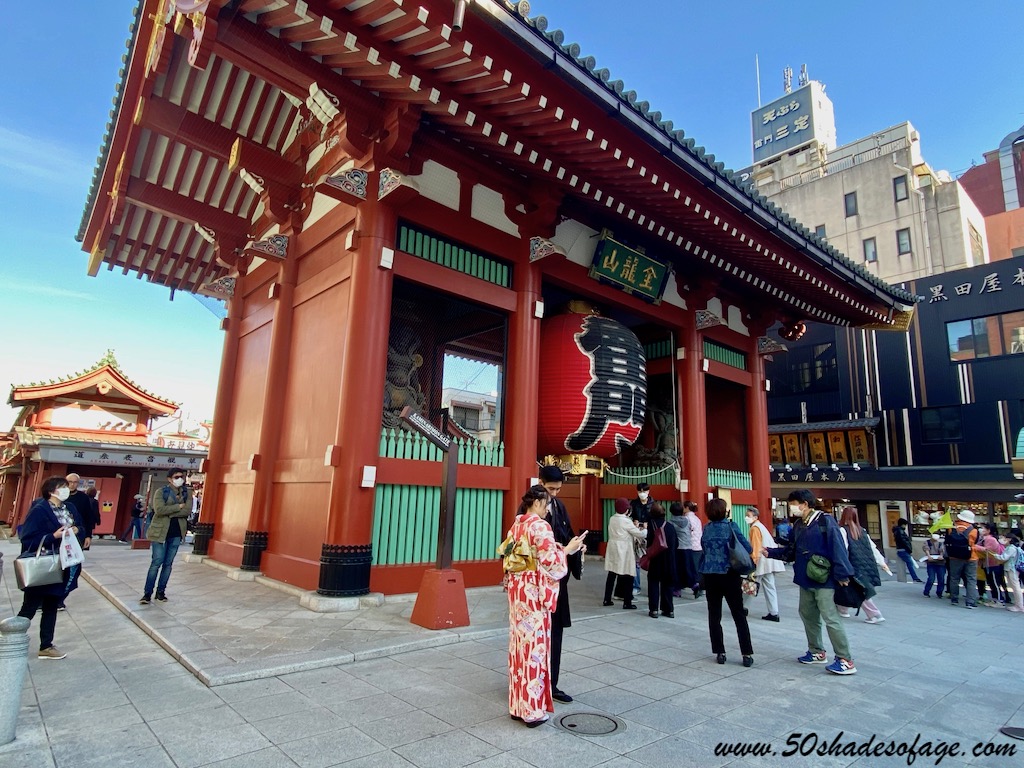
We checked out the Tsukiji Outer Market, adjacent to the former wholesale fish market, where we enjoyed some fresh sushi for lunch, amongst other delicacies.
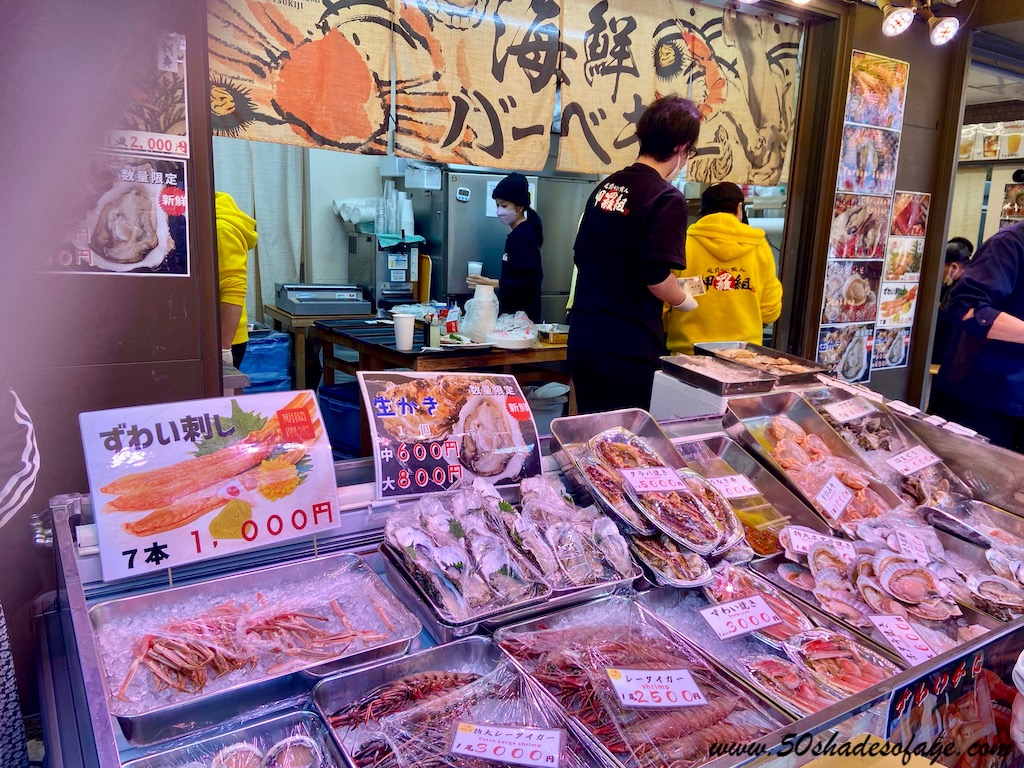
The outer grounds and parklands of the Imperial Palace, where the Emperor of Japan resides, was our next stop. Although we didn’t get close to the palace, as it is surrounded by a moat and high walls, we could take photos with the palace as a backdrop.
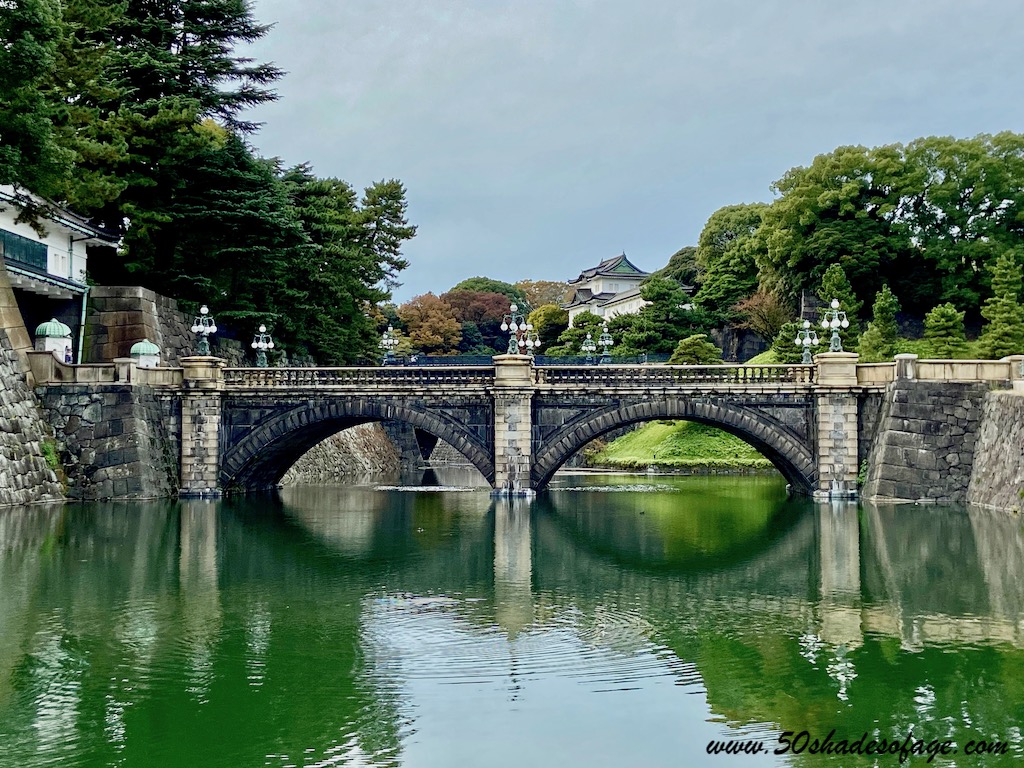
Our day ended in the upmarket area of Ginza, with its high-end shopping, galleries and restaurants. It is fully westernised with designer brand shops such as Tiffany & Co, Louis Vuitton, Bvlgari, Gucci, Prada and Chanel, to name a few. We stayed into the evening to witness the streets lit up with Christmas lights. It was magical!
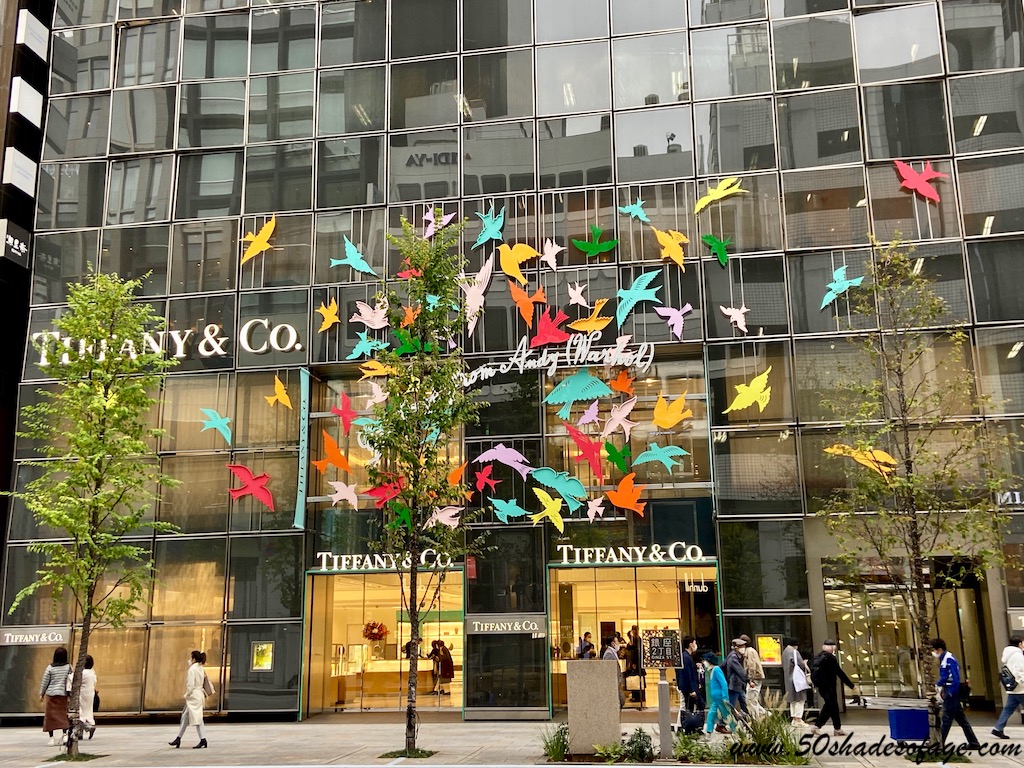
Our tour had ended, however we had the entire next day to explore Tokyo on our own. We wound up our holiday by exploring the Tokyo Station area and Marunouchi neighbourhood. Marunouchi Naka-dori Street was a big highlight with plenty of interesting outdoor sculptures, upmarket shops, food trucks and restaurants. We easily passed the day here.
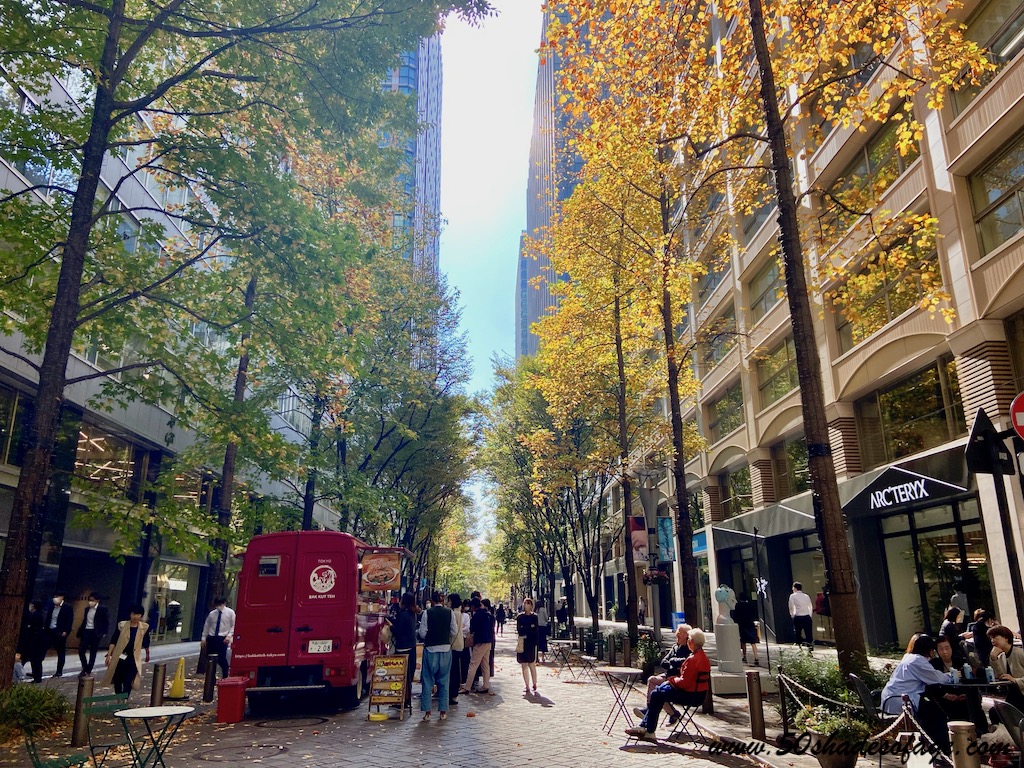
Our 15-day Inspiring Japan tour was incredible from start to finish. We were fortunate to have the best young Japanese tour guide who spoke good English and a very experienced and safe bus driver. As for our tour group, they were all fantastic people and we all had the best time together. Japan you stole my heart!
Kathy was a 50 something year old when she started up this blog 6 years ago, but has since turned over another decade and is now in her early 60s. She is married with two adult children and lives on the Tweed Coast of New South Wales, Australia. Kathy enjoys living life to the fullest and loves to keep fit and active by maintaining a healthy diet and exercising regularly. Some of her interests include reading, photography, travelling, cooking and blogging! Kathy works part-time as a freelance writer but her real passion is travelling and photographing brilliant destinations both within Australia and overseas and writing about it.

